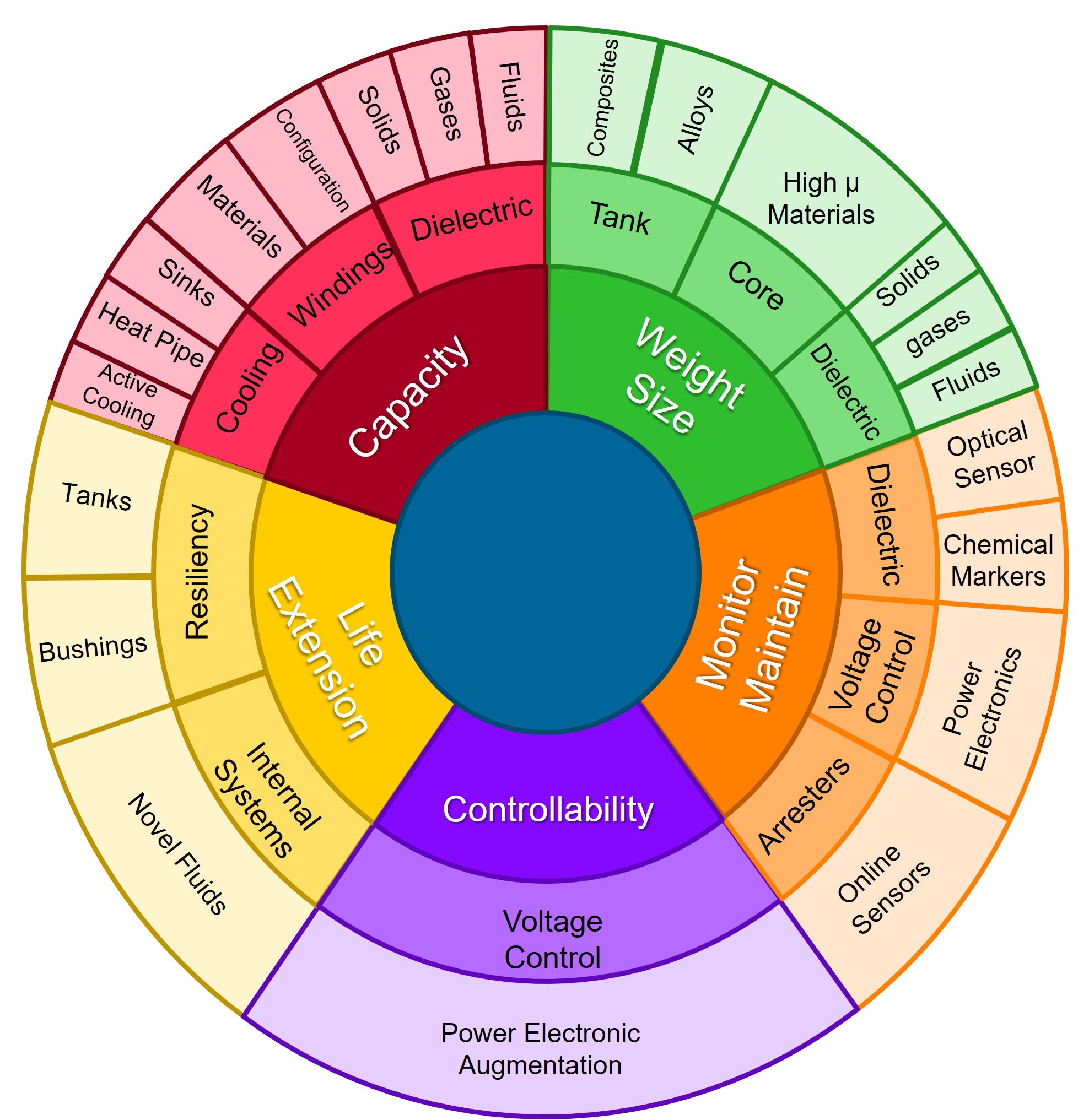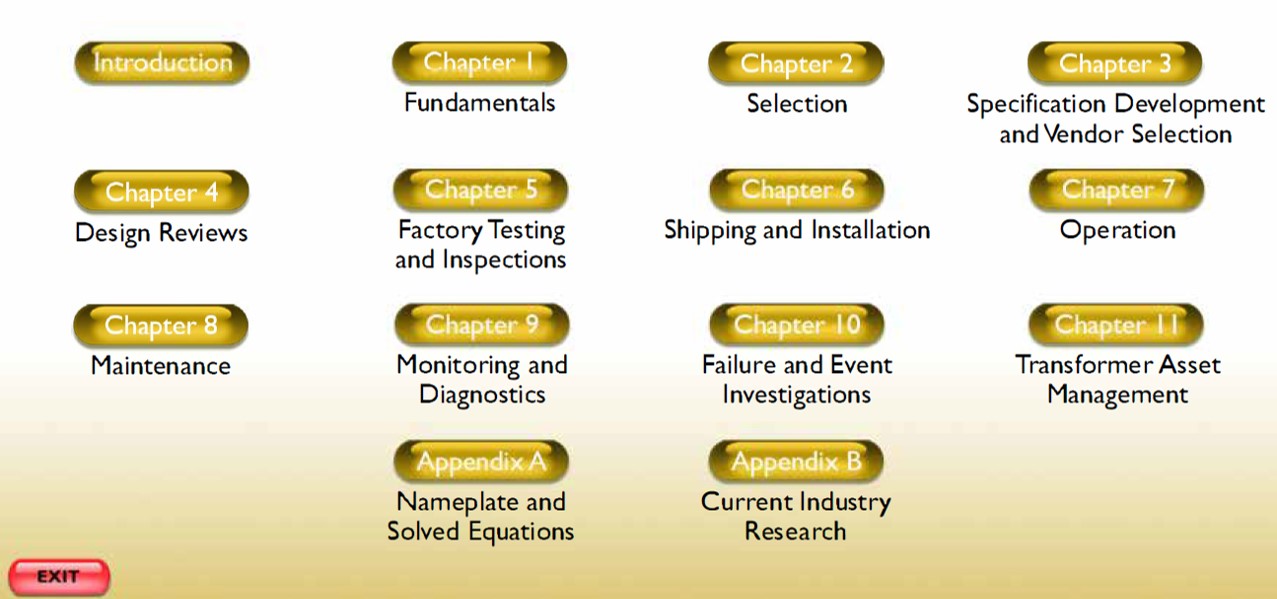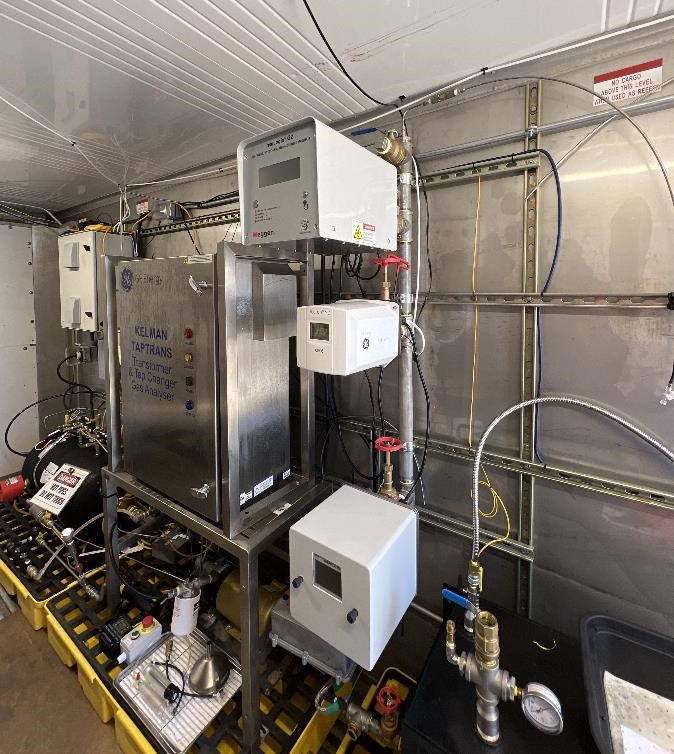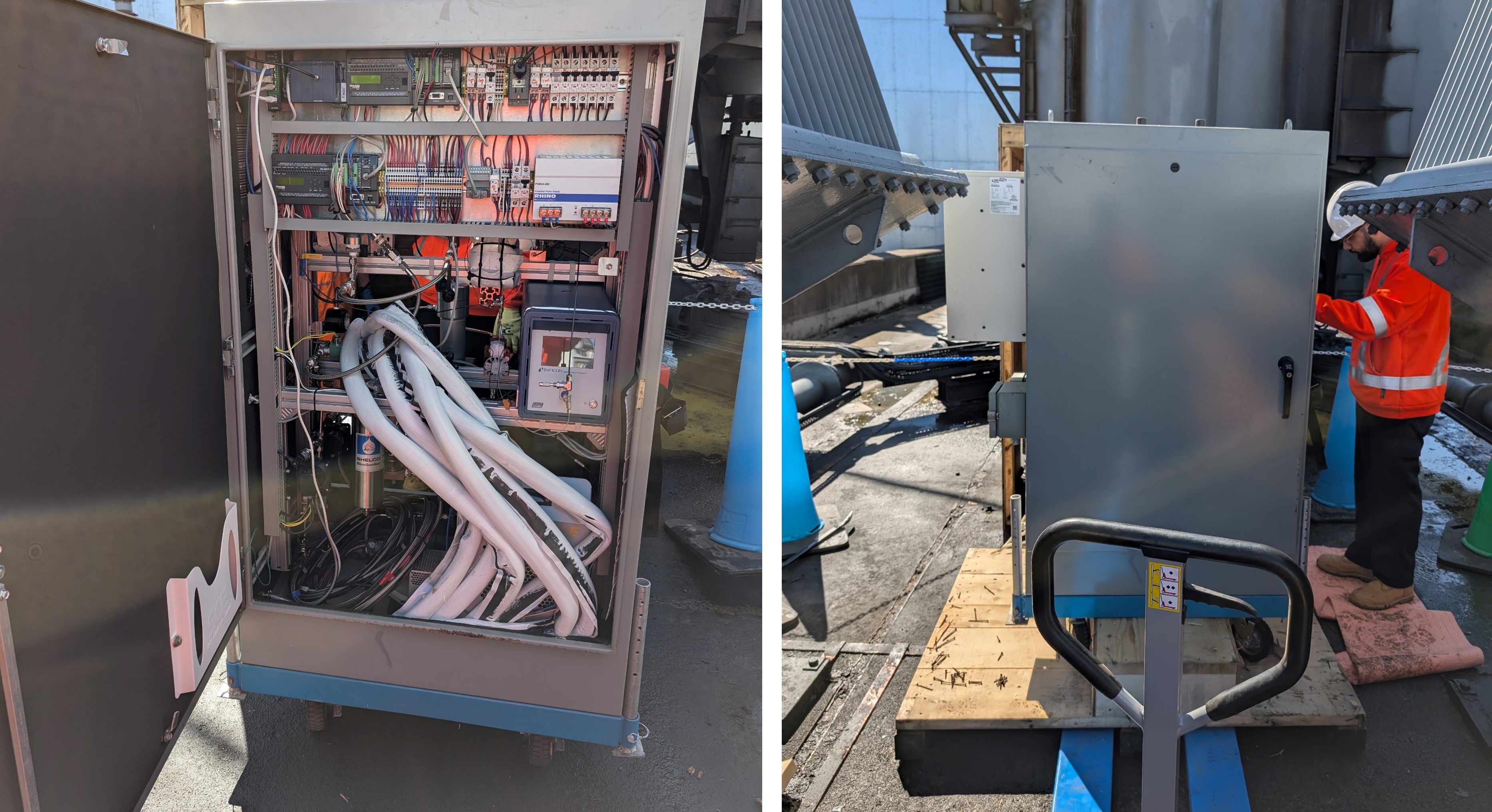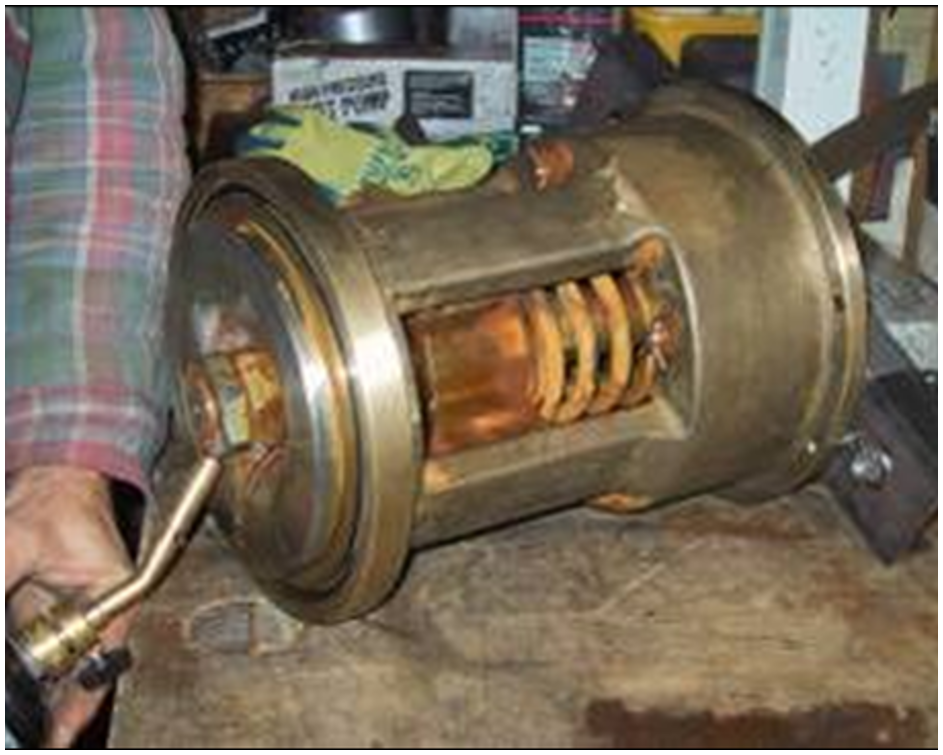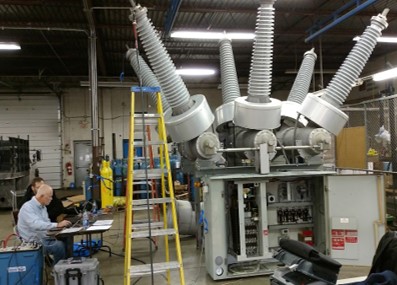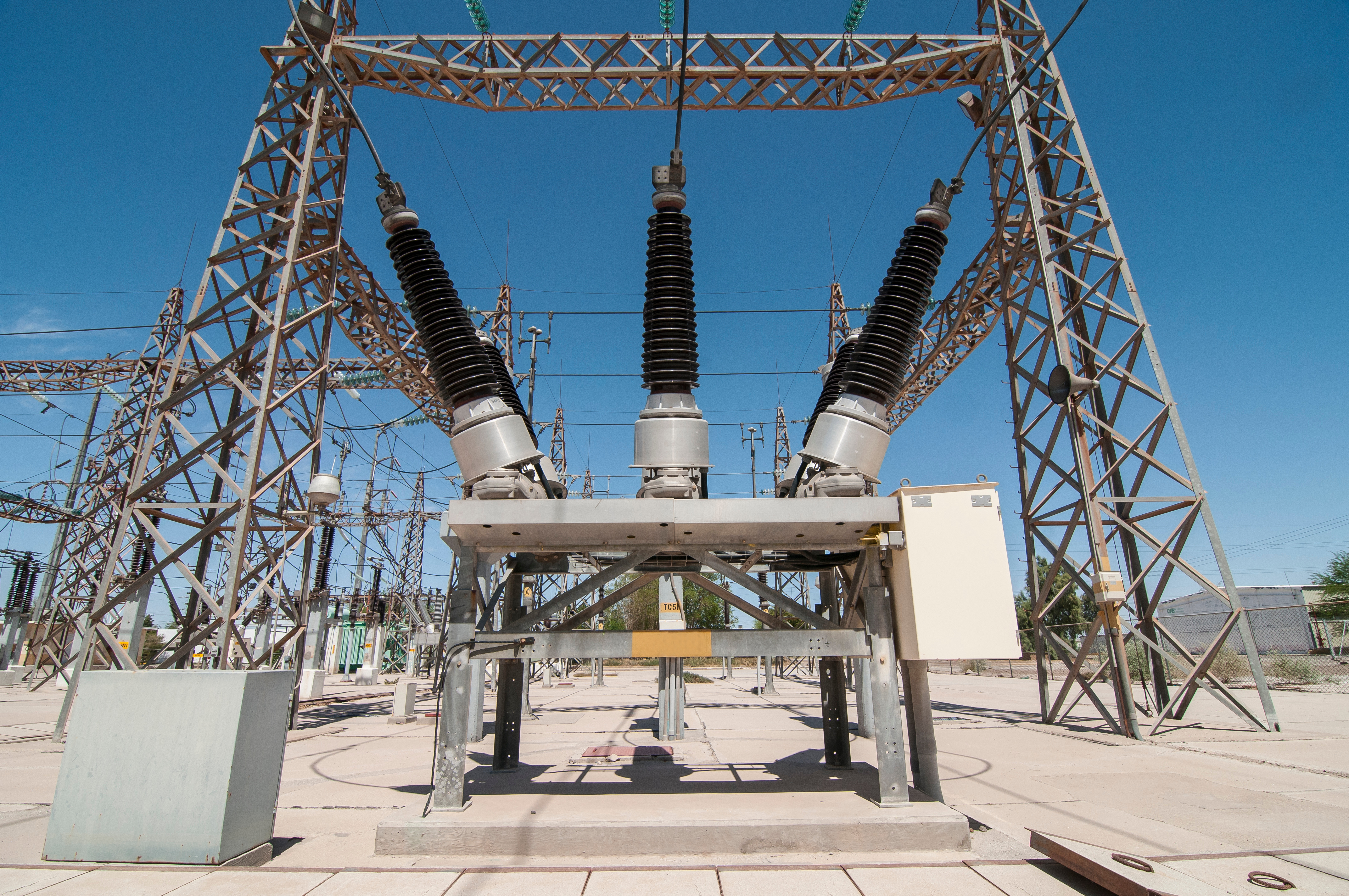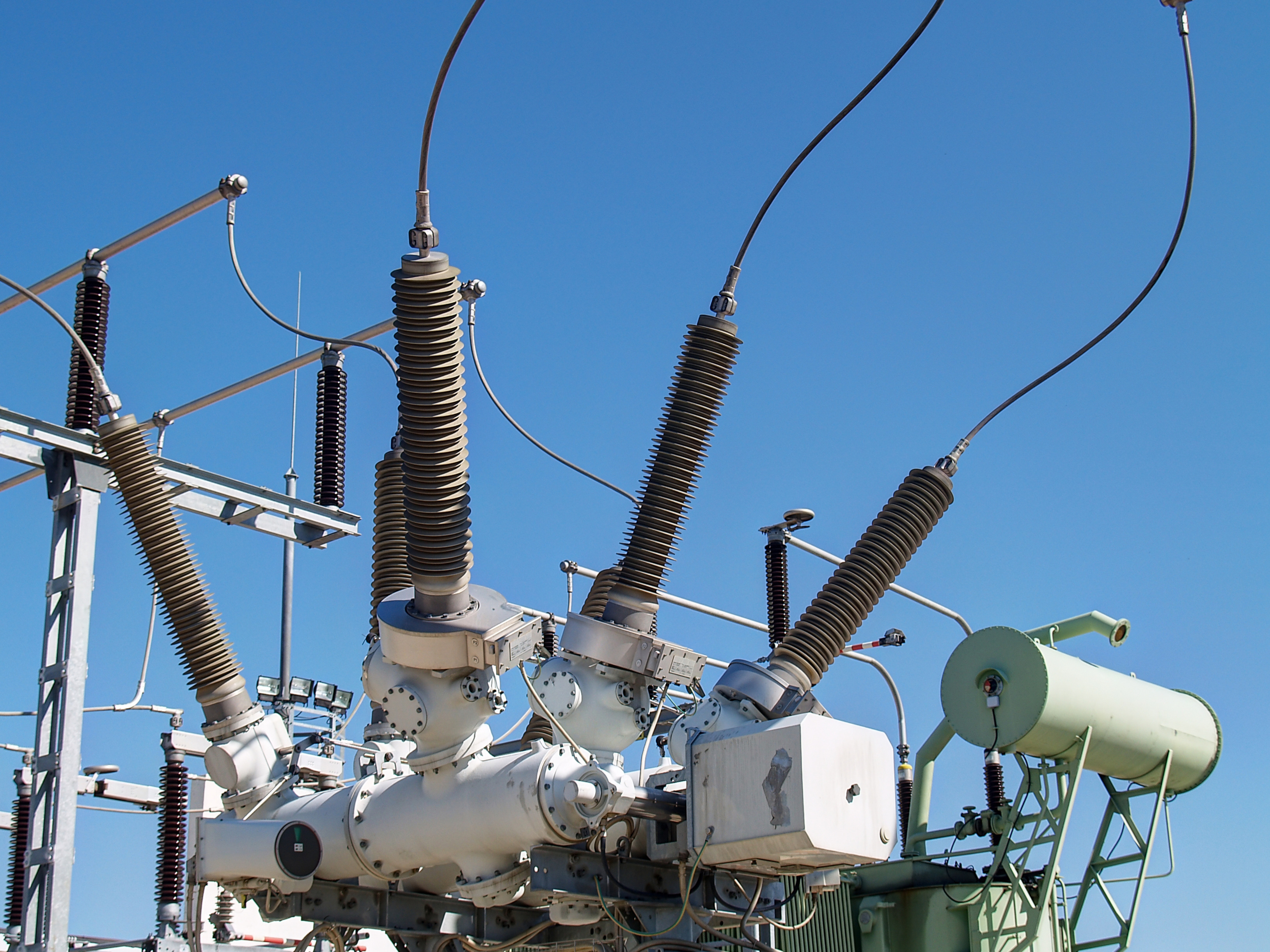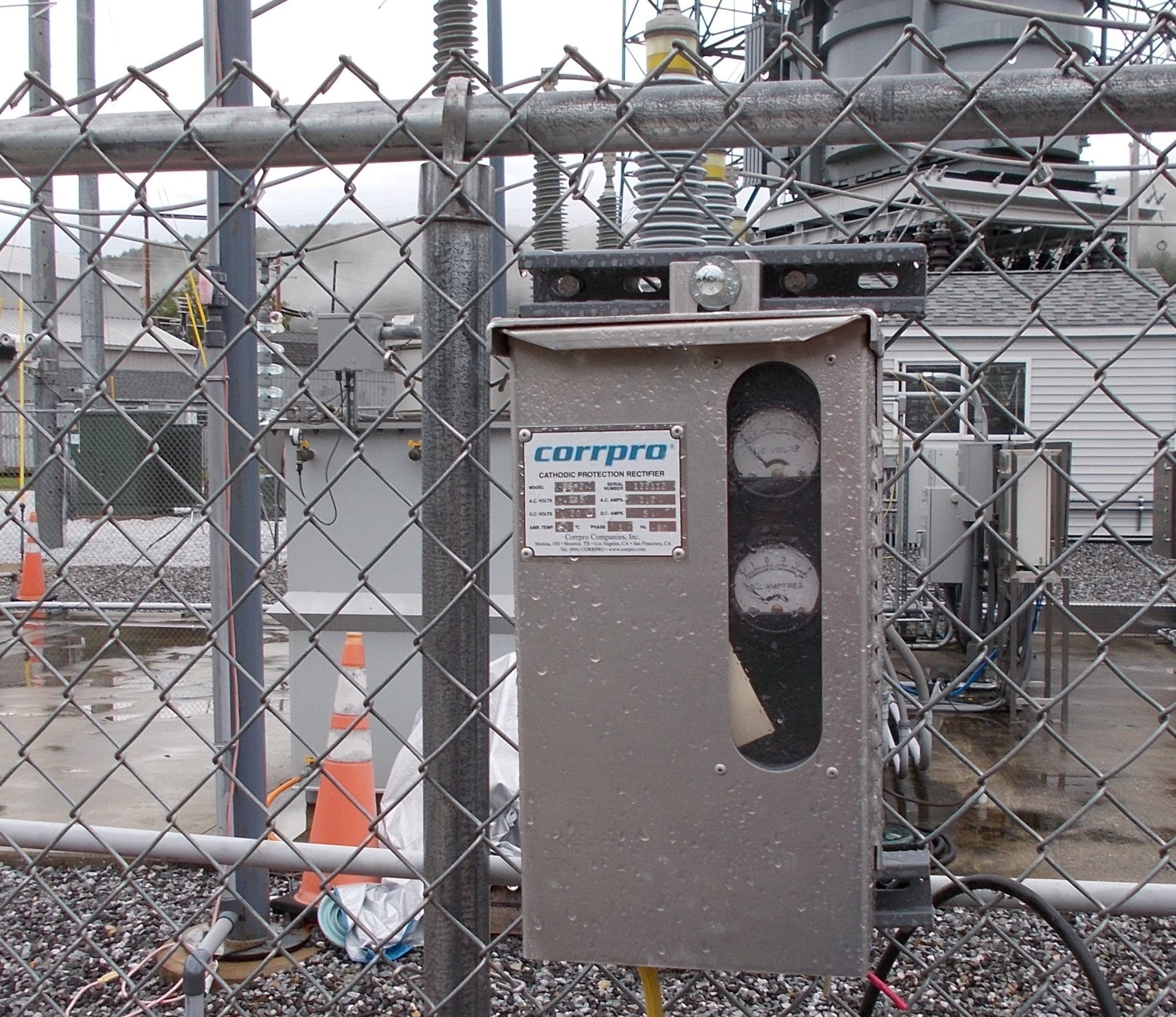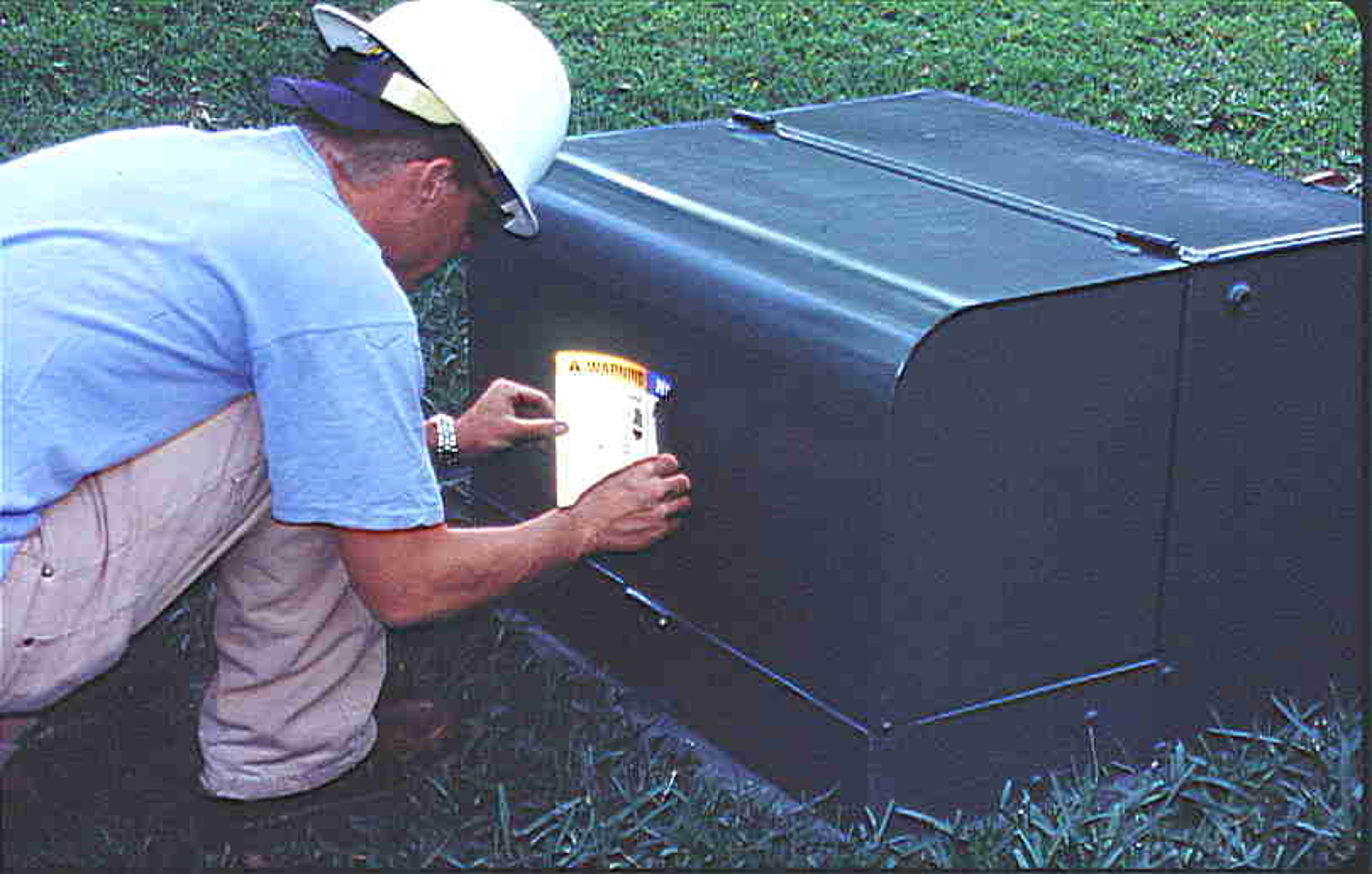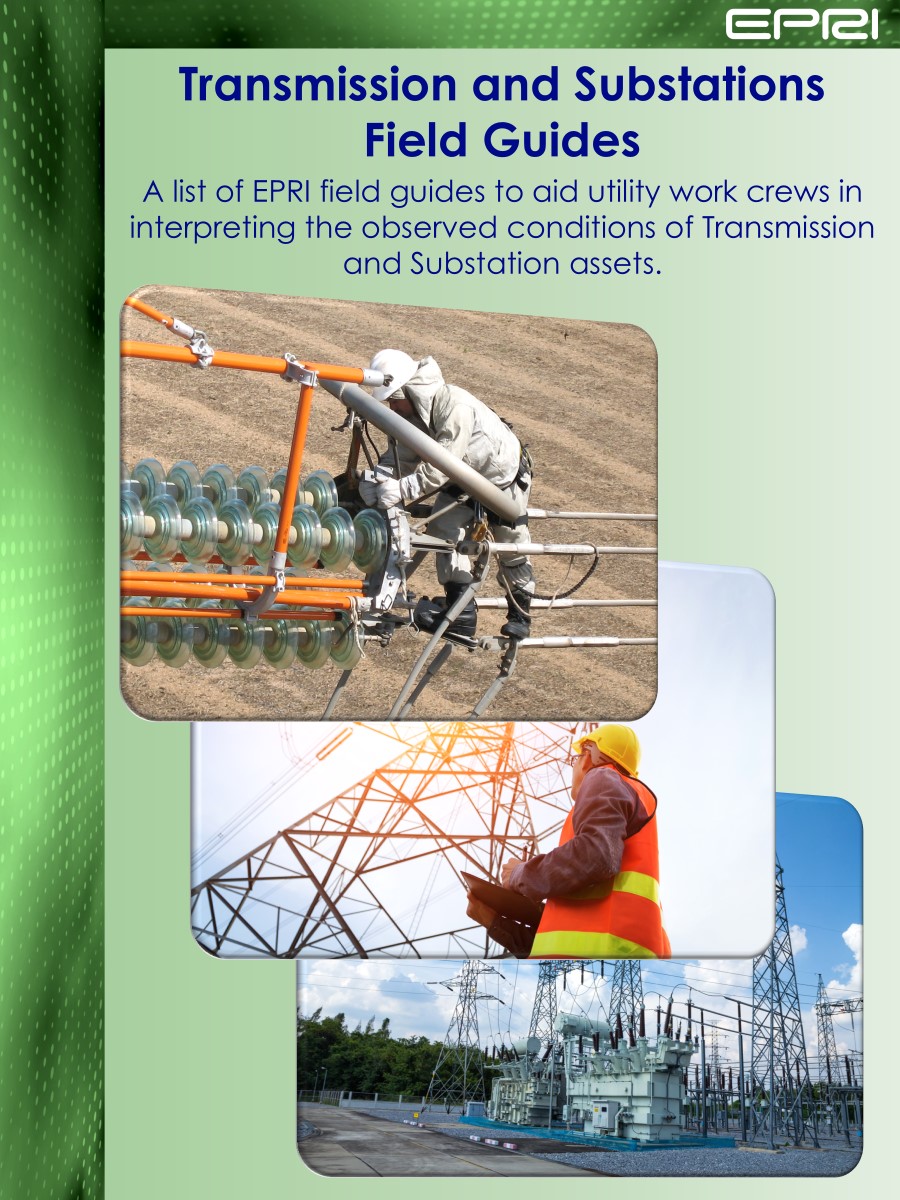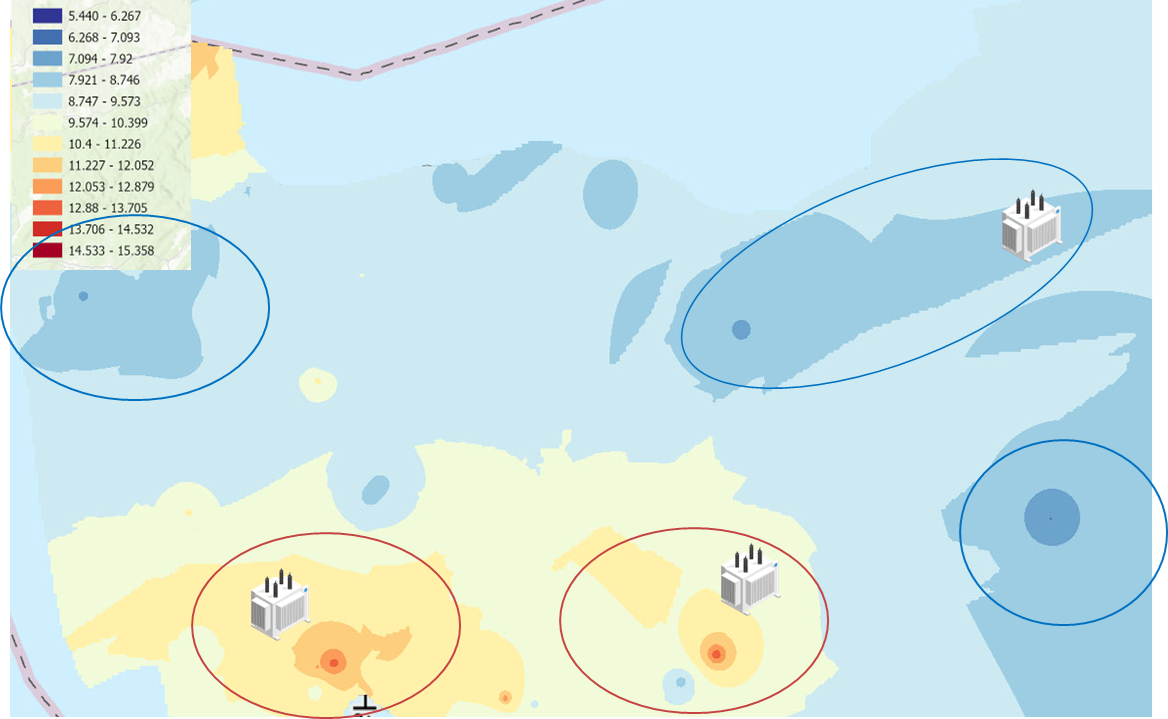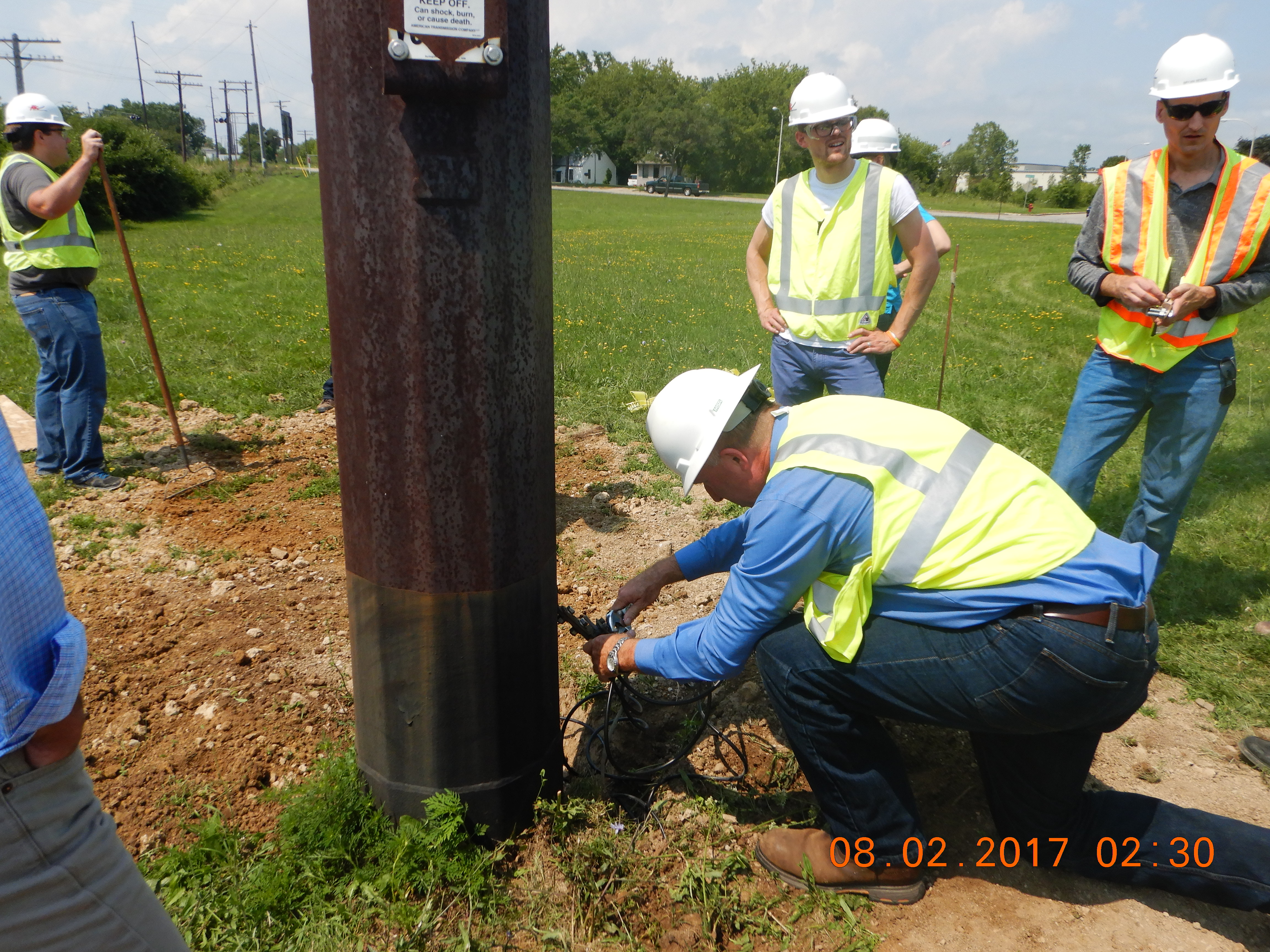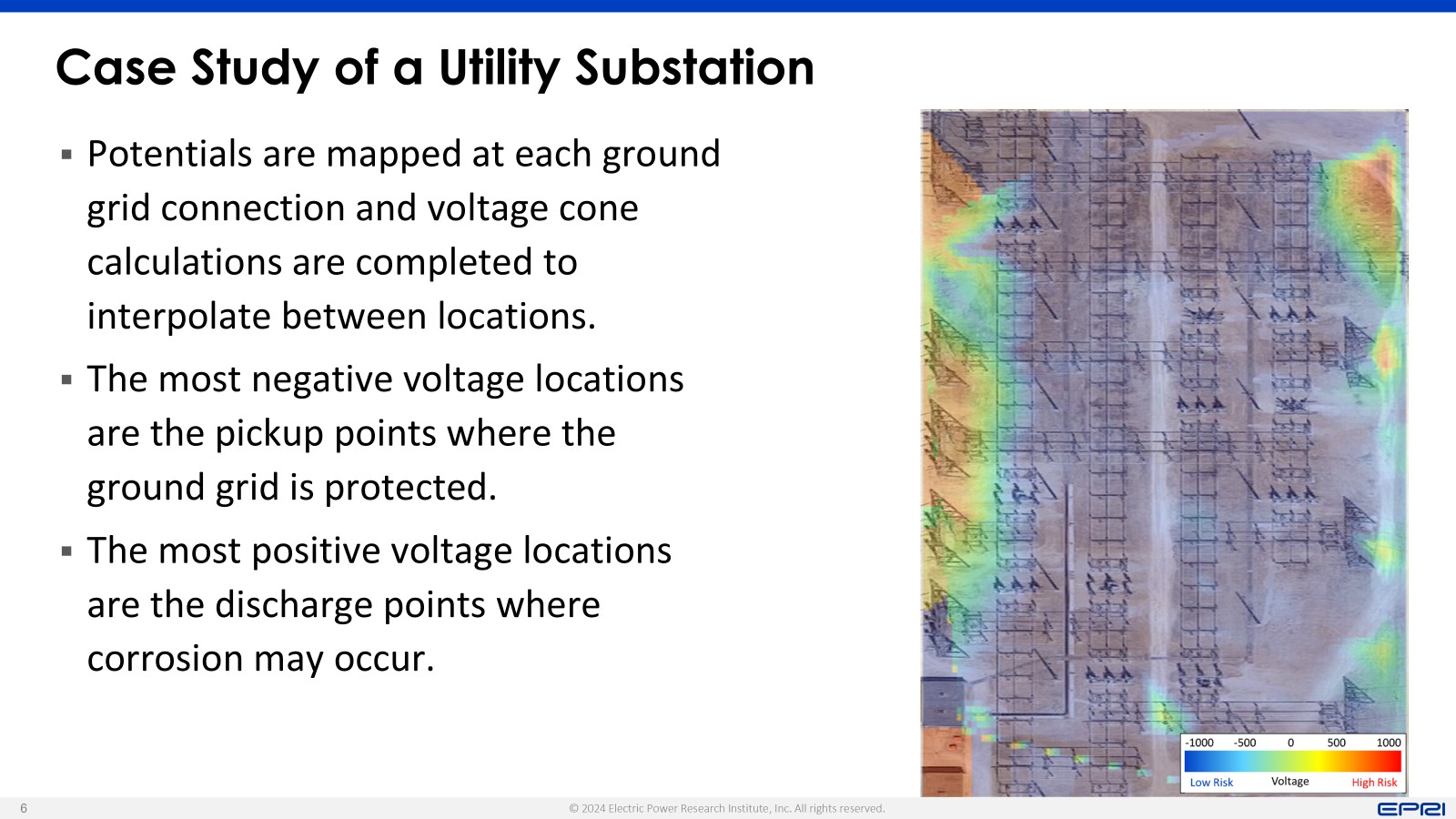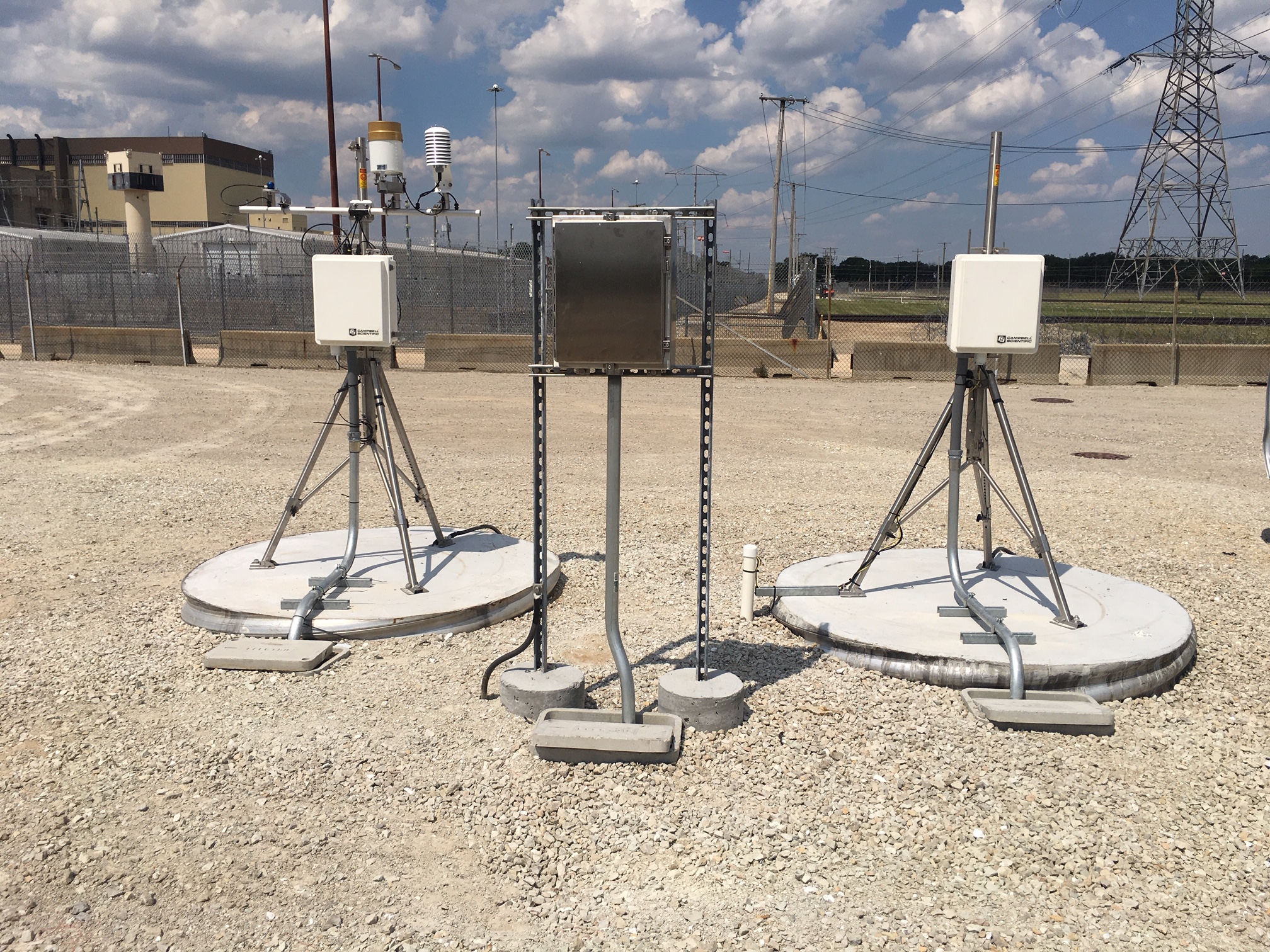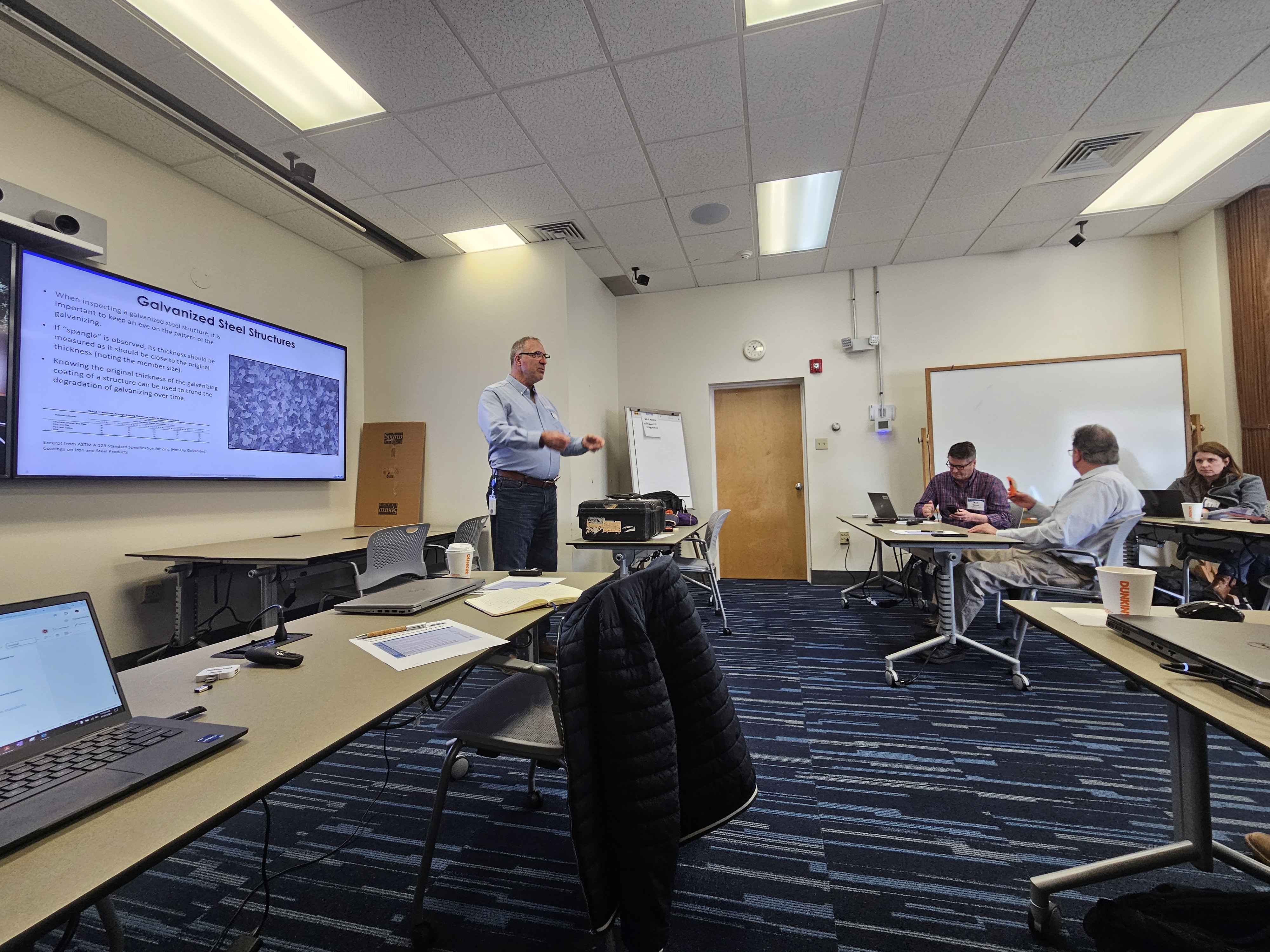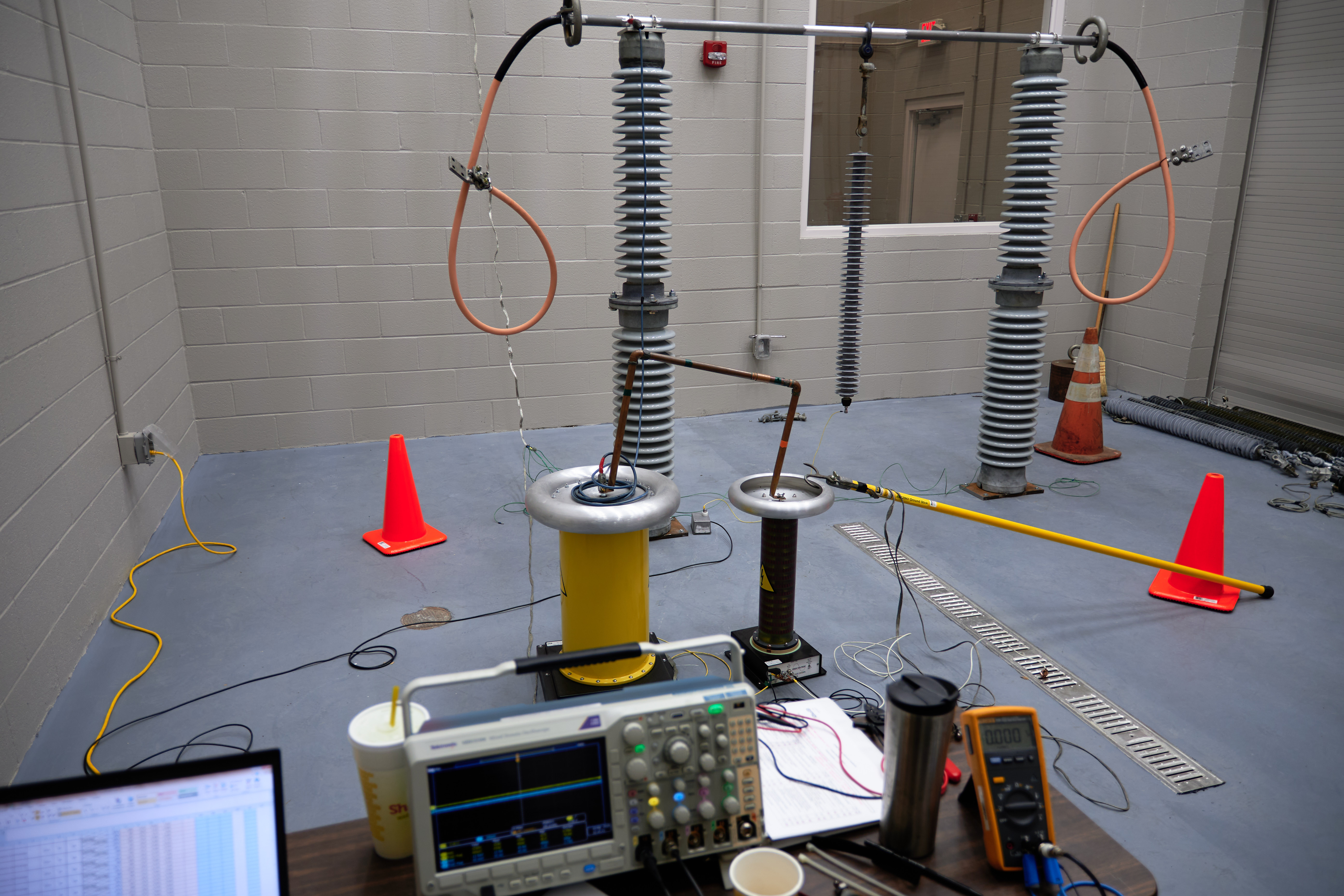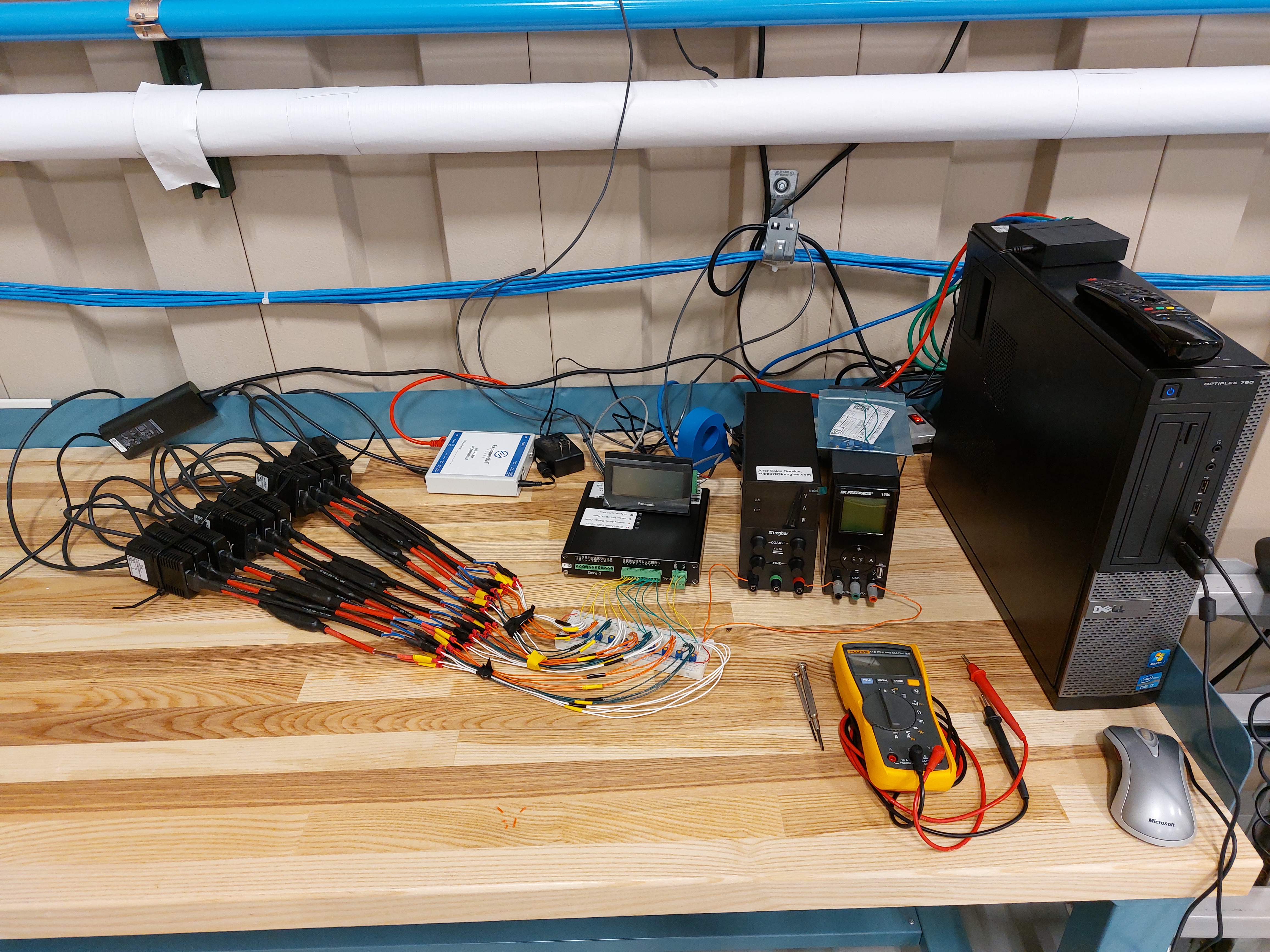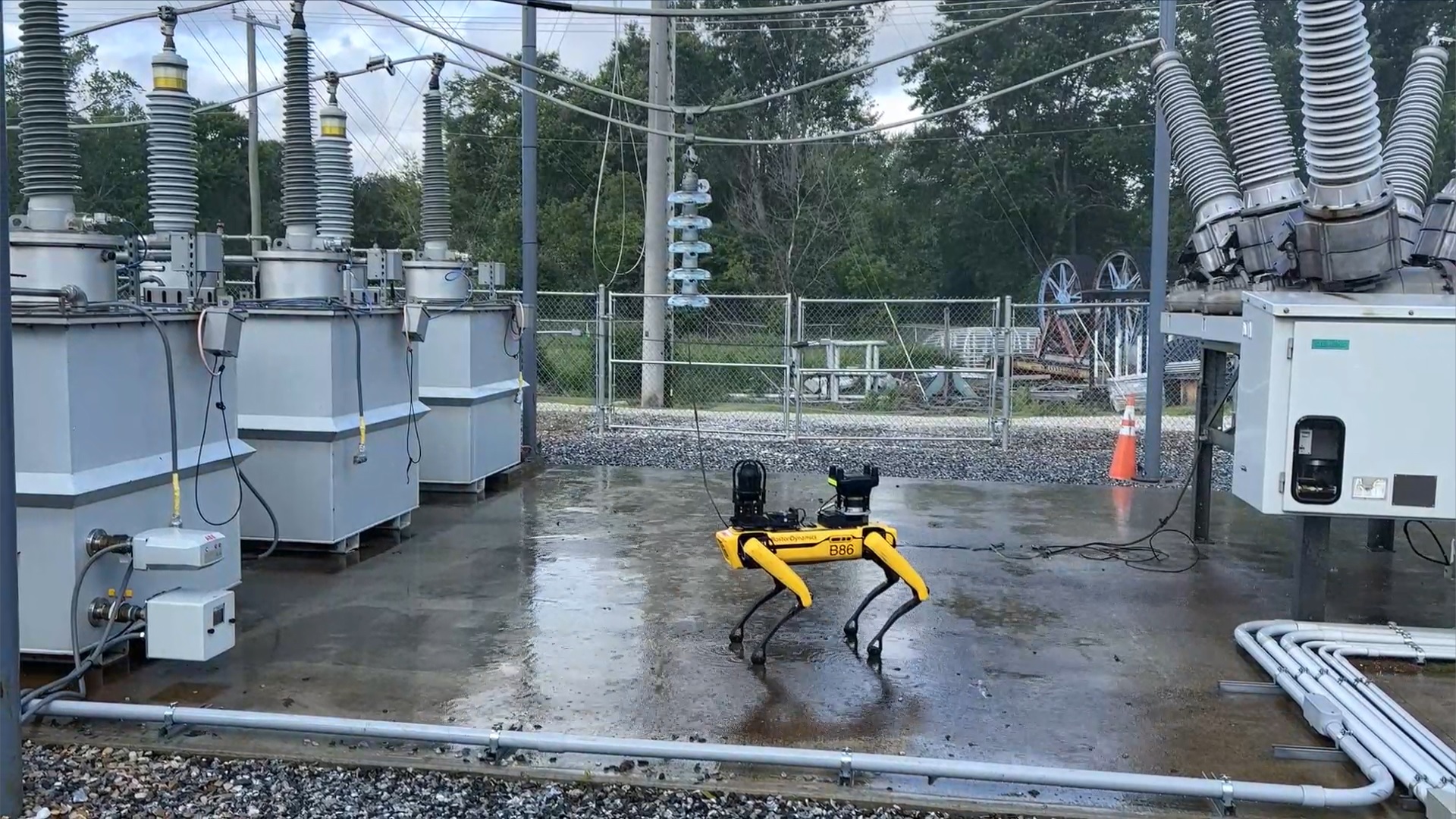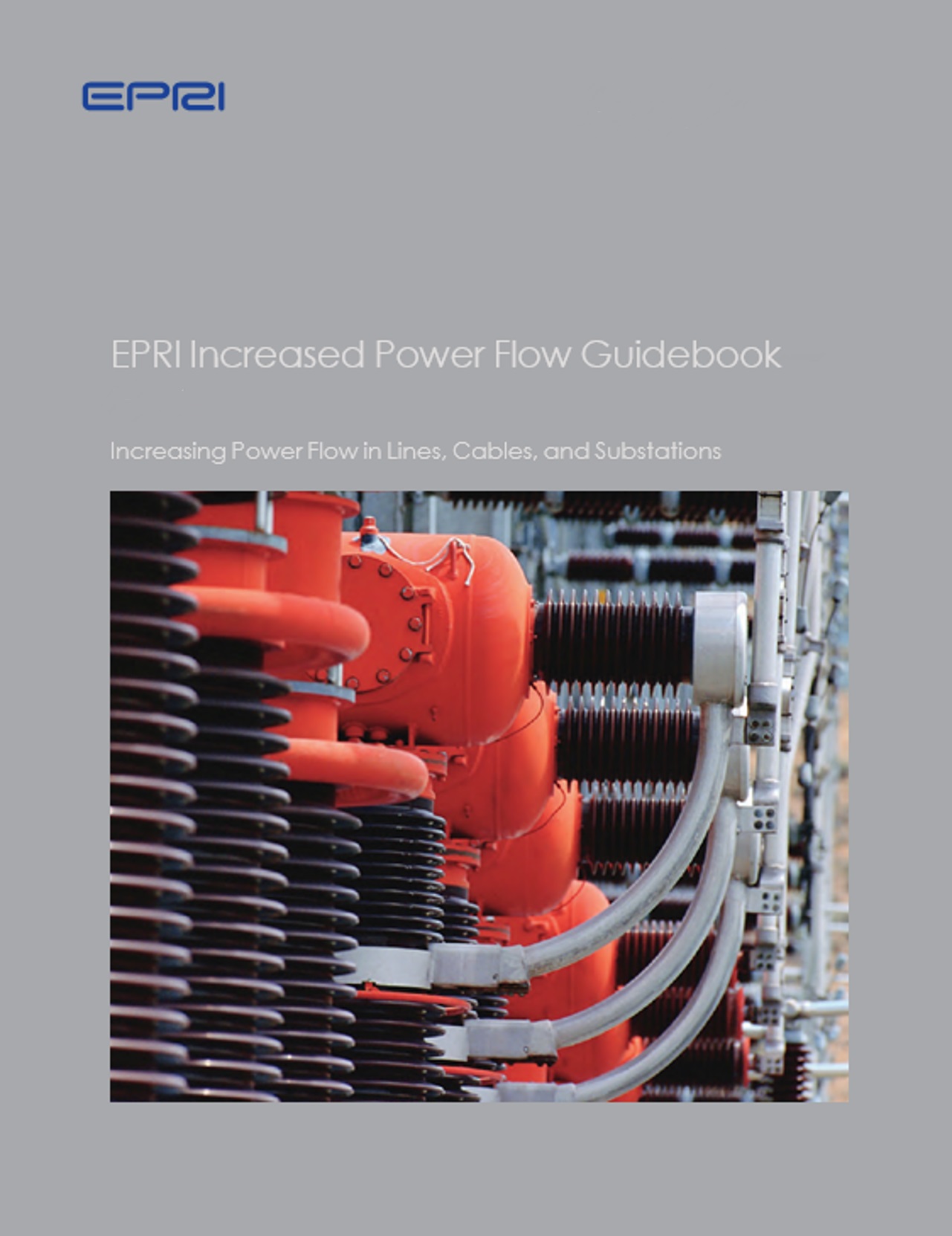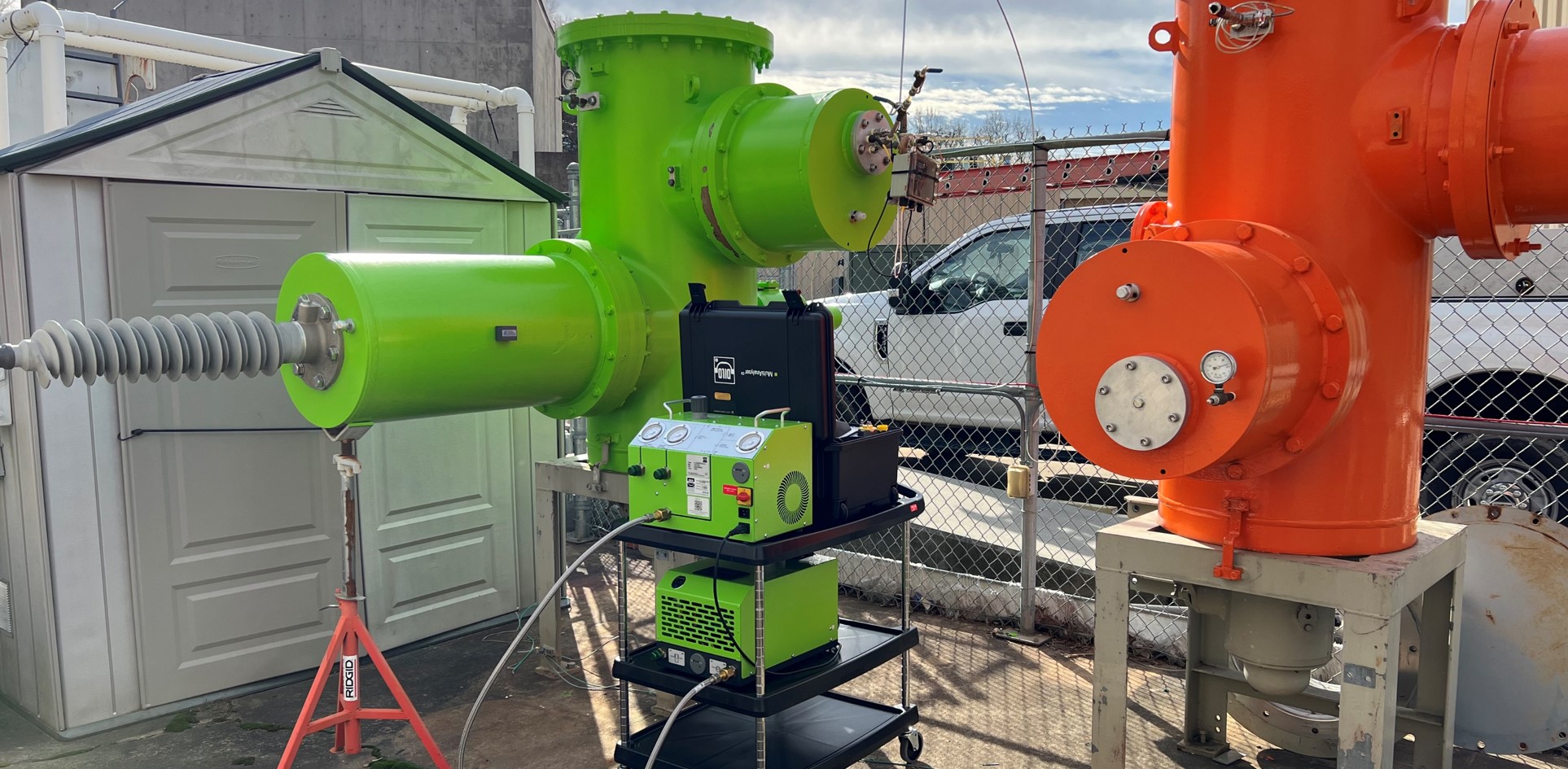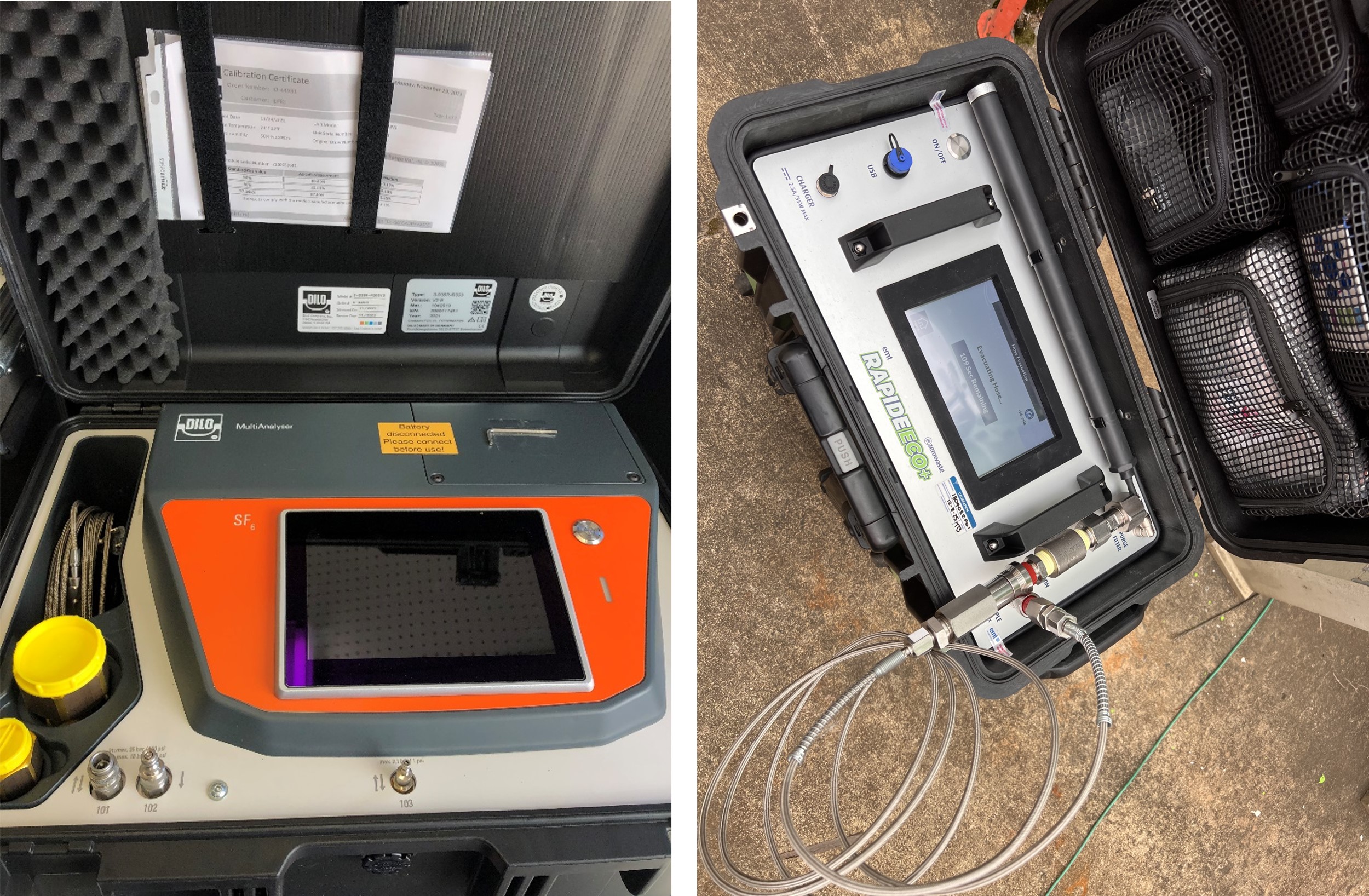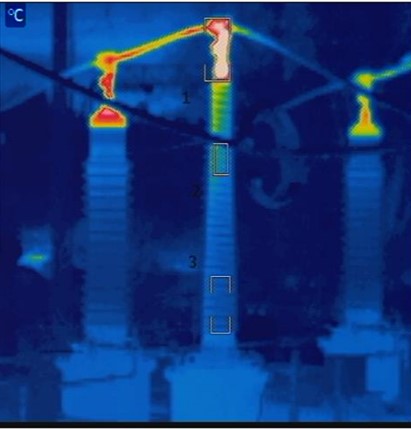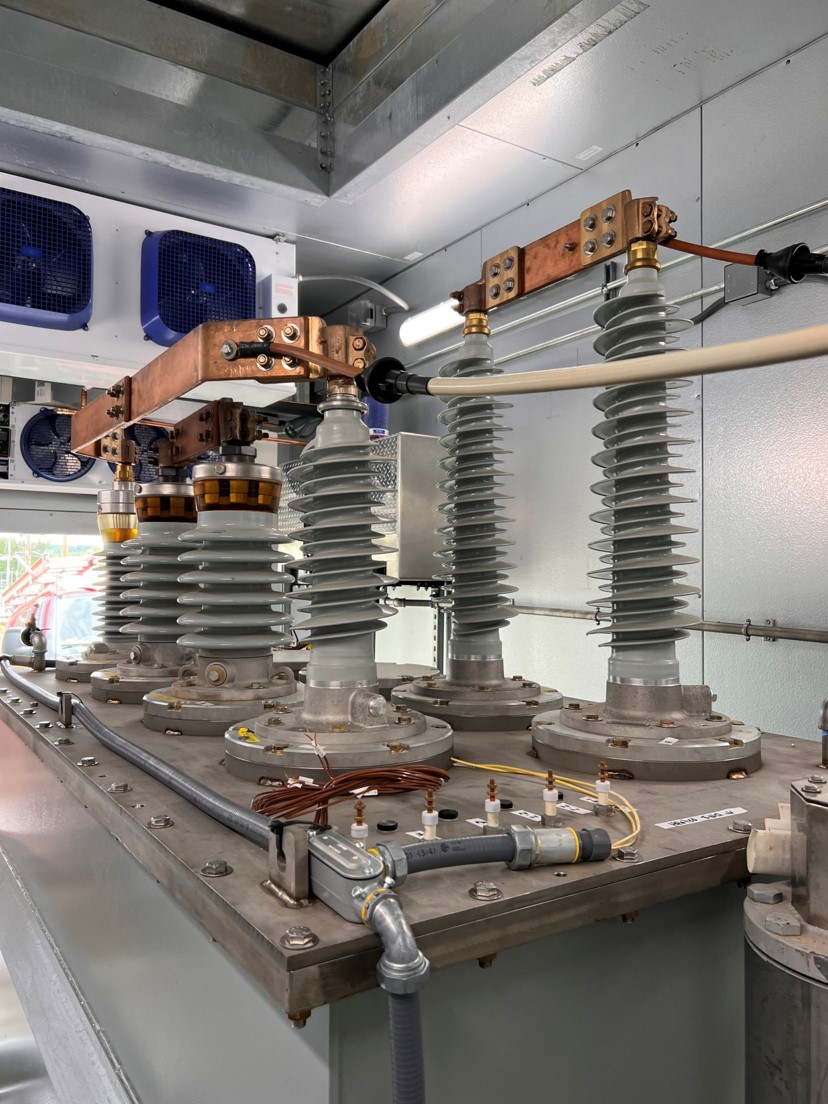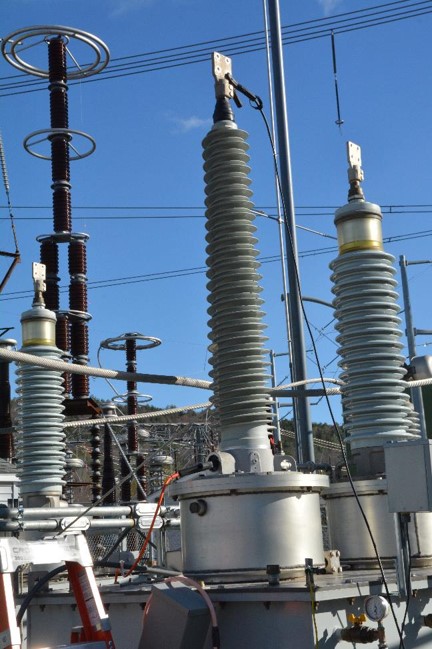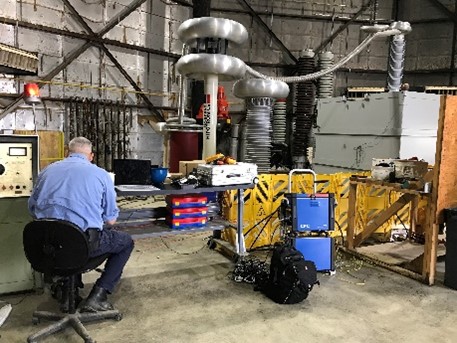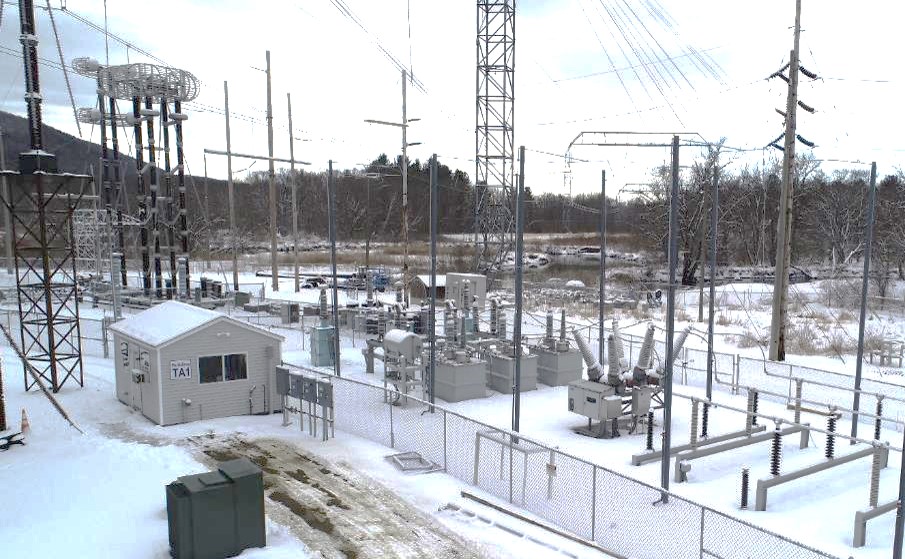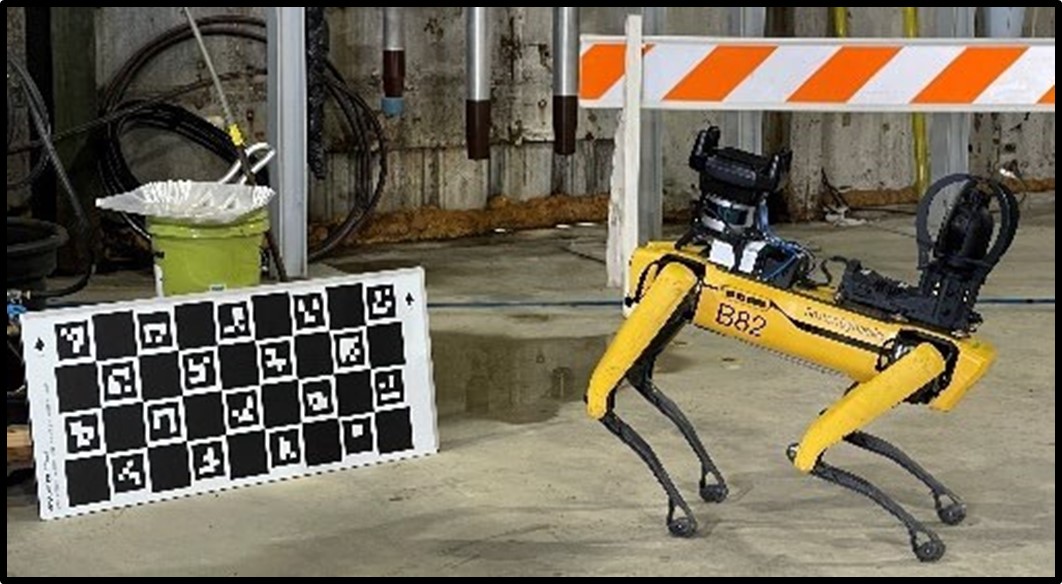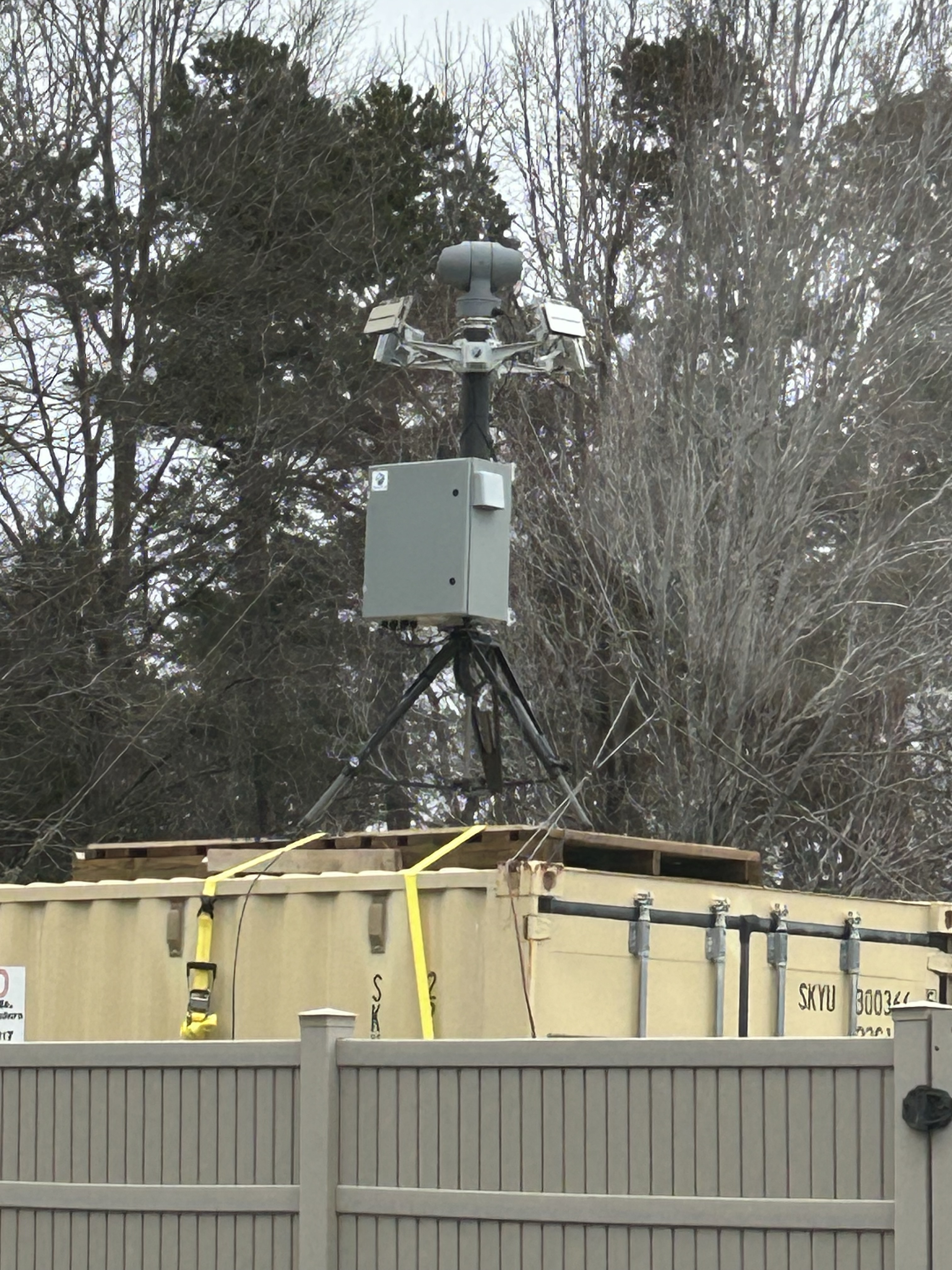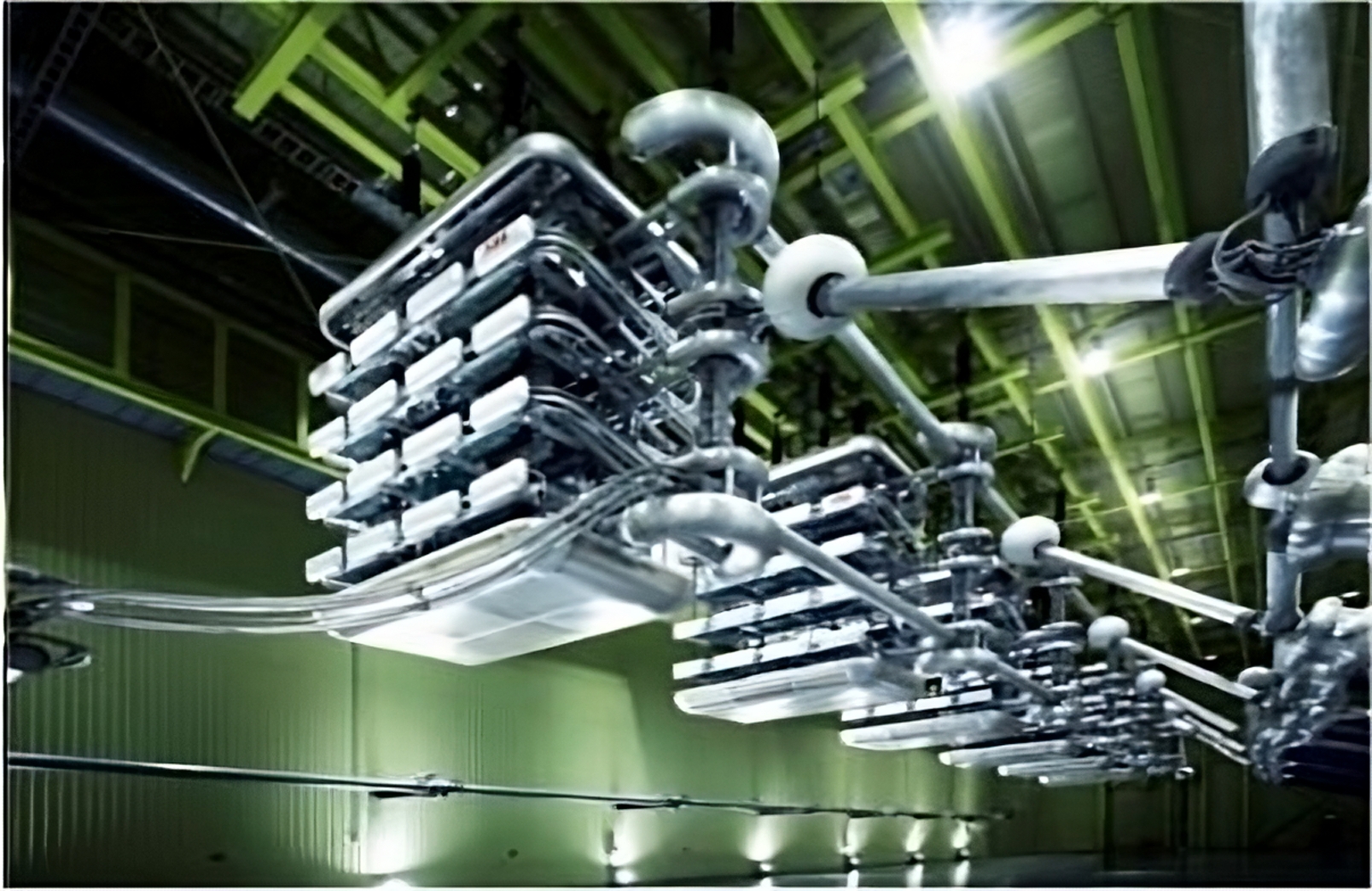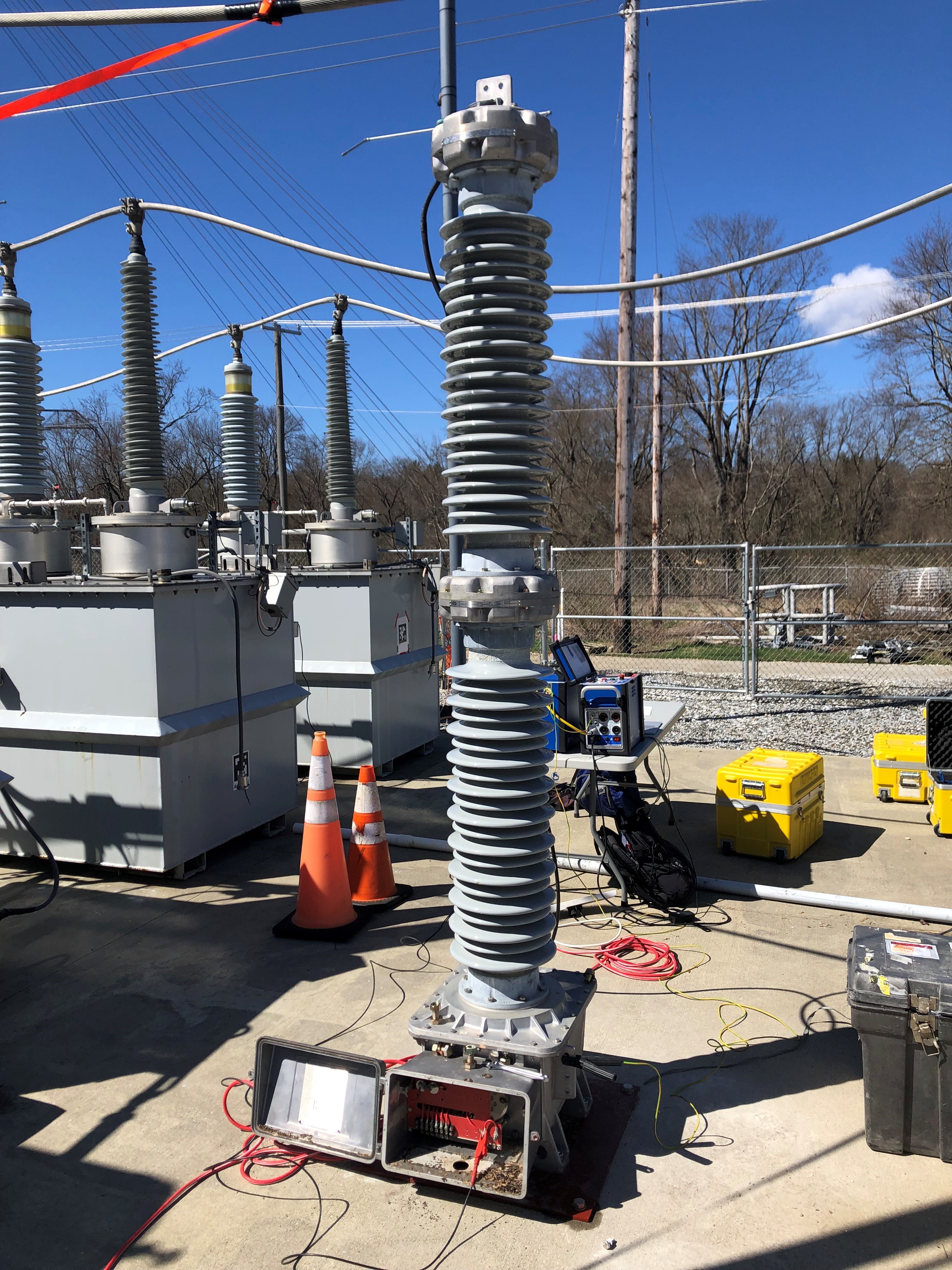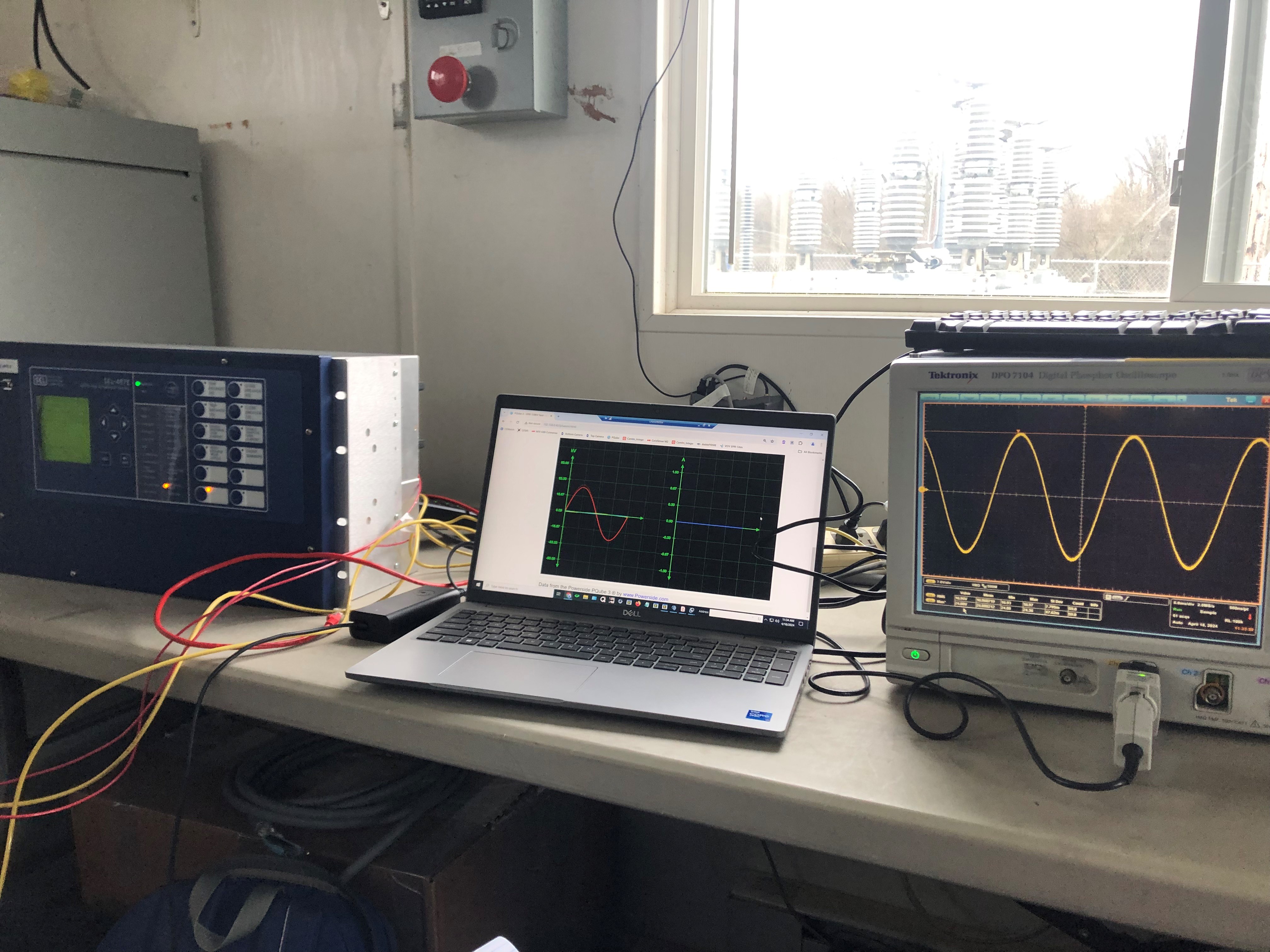1 - P37.101: Transformer Life Management
Objective
Unique EPRI transformer research laboratories and expertise are driving the development of innovative tools and knowledge to help substation owners anticipate and prevent transformer failures, extend transformer life, retain key subject knowledge, and specify new diagnostic equipment with confidence. With the increasing need to maximize transformer assets while maintaining the highest levels of system reliability, managing aging power transformers has become a critical issue for today’s substation owners.
The objectives of this research are to provide accurate, rapid, and useful research results to help members better specify, operate, and maintain transformers. These results include hardware, software, laboratory findings, and guidebooks. Hardware prototypes are tested first in the laboratory and then piloted in utility substations, facilitating easy future adoption. Online monitoring technologies are thoroughly assessed using repeatable test protocols. The Power Transformer Guidebook (Copper Book) is continually expanded and updated as a comprehensive reference for utility personnel responsible for all aspects of transformer operation, maintenance, procurement, and life-cycle management. The Copper Book also serves as the basis for regular EPRI technical training webinars.
Research Value
- Insights into the real-world performance of new transformer concepts in the field
- Reduced operations and maintenance (O&M) through improved specification of emerging condition-monitoring techniques based on solid data and repeatable test protocols
- Unbiased third-party assessment of online monitoring technologies’ life-cycle costs to aid industry specification and interpretation
- Enhanced risk assessment of transformers, leading to improved decision making regarding these critical assets
- Effective knowledge transfer through the Copper Book and regular technical webinars. The guidebook is a comprehensive collection of transformer knowledge designed specifically for utility owners and operators
- Valuable guidance on the application and effective use of novel fluids for transformers
- Industry standards-based loading methodologies for transformers and other equipment on the same circuit
Approach
Transformer of the future: Utility experience from field deployments: There is a growing list of emerging and novel transformer technologies being installed, and valuable lessons can be learned from these early field deployments. EPRI’s collaborative research approach provides significant opportunities to learn from the field. The shared learnings will help reduce the risks for the industry on selection and deployment of new technologies. Examples include resilient transformer concepts, flexible transformers (voltage, impedance etc.), transformers with novel fluids, and solid-state transformer components.
EPRI Power Transformer Guidebook (Copper Book) 2026 update: Each year EPRI publishes updates to the Copper Book to keep members up to date with the latest research, technology developments, and transformer standards. The guidebook is written for utility engineers and field staff, covering topics from specification to end-of-life assessment. In 2026, two valuable additions will be made: deeper guidance on dissolved gas analysis (DGA) sampling based on EPRI laboratory testing and a growing list of quick-reference, single-page summaries of key topics.
Technical webinars on the Transformer Guidebook: Multiple technical webinars based on chapters in the Transformer Guidebook are hosted each year. The webinar material is published for continued and convenient future access. Topics are selected to accelerate learning on key topics in the Transformer Guidebook (Copper Book).
Transformer online monitoring technologies: Laboratory testing to help members in specification development: In preparation for 2026, the laboratory capabilities for monitor evaluations have been expanded to allow for rapid and flexible testing of online bushing monitors. The results from the 2026 research provide valuable assistance in transformer monitor specification, interpretation, and adoption. A full 138-kV EPRI research substation also supports this research. EPRI laboratory test results are executed against a well-defined test protocol for online DGA monitors, online bushing monitors, online partial discharge monitors, and online temperature monitors. This unique approach allows for rapid answers on high-impact decisions that are then applied fleetwide in a utility.
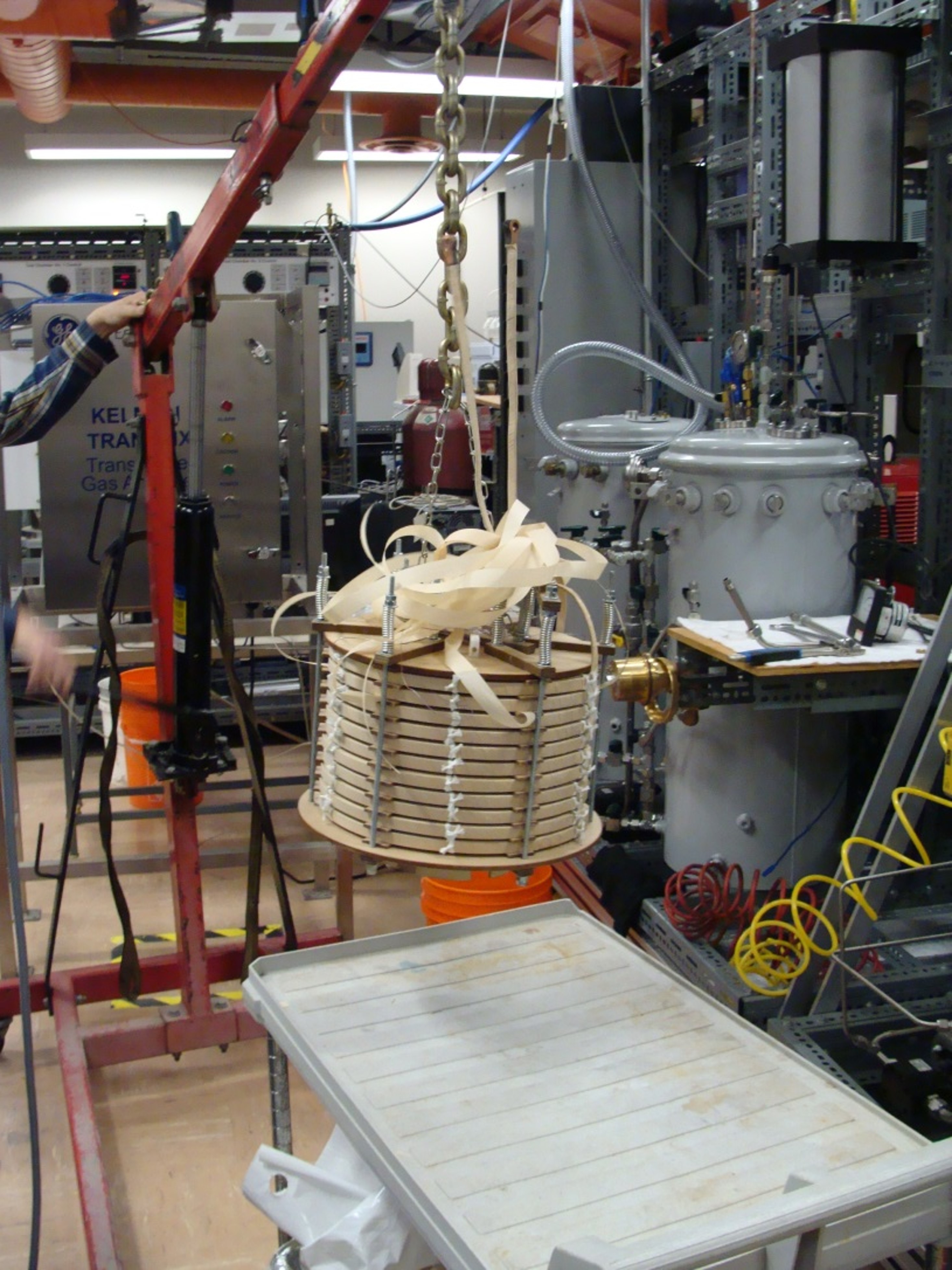
Alternative fluids for transformers for increased ratings, extended service life, and reduced environmental impact: This research in 2026 aims to identify the characteristics that define the end of life for ester fluids. With several years of use, many chemical and physical properties of ester fluids can change significantly from the starting values. In many cases, the values of different ester properties can surpass the limits set for mineral-based oils. Even with such property changes, many users continue to use the ester fluids, not knowing how detrimental the changes in fluid could be to the operation and health of their transformer. Using accelerated aging systems, beneficial guidance could be obtained on what changes to chemical and physical properties (such as acid number, fire point, viscosity, etc.) mean to system operation and health. The goal of the results is twofold: to help set limits for acceptable operation of ester fluids; and to help users decide when to perform maintenance, a fluid change, and/or change the loading on the transformer.
New oil markers to aid power transformer diagnostics: In 2026, it is planned to explore the stability and dynamics of some newly identified oil markers by EPRI and others in the literature. It is known that new marker compounds are generated in the presence of oil and/or paper under different stresses (i.e., overheating, partial discharge, arcing). However, the longevity and interaction dynamics of the new markers with other components and chemicals inside a transformer are not known well, or sometimes not known at all. Data collected from a unique online marker detection system deployed by EPRI aims to provide some insights into new marker dynamics in a working transformer. Further exploration into new marker dynamics will be performed, providing the industry with enhanced value from oil samples and greater insights into transformer condition.
Anticipated Deliverables
| Deliverable |
Description |
| Date |
| Transformer of the future: Utility experience from field deployments |
Valuable field insights on the application of new power transformer concepts. |
12/31/2026 |
| EPRI Power Transformer Guidebook (Copper Book) 2026 update |
The 2026 EPRI Power Transformer Guidebook will include the latest updates based on ongoing research and industry advances and continue adding valuable single-page quick reference guides for key topics. |
12/31/2026 |
| Technical webinars on the Transformer Guidebook |
Regular webinars are developed for project funders onkey topics in the EPRI Power Transformer Guidebook. |
12/31/2026 |
| Assessment of transformer online monitoring technologies to help members in specification development |
New self-calibrating online DGA technology and new bushing monitoring technologies will be added to the wide array of monitors under assessment. |
12/31/2026 |
| Novel fluids for transformers |
Through well-defined test protocols, input from users, and emerging literature, the research looks to provide valuable guidance on the opportunities, uses, and challenges associated with alternative fluids. |
12/31/2026 |
| New oil markers to aid power transformer diagnostics |
The 2026 results strive to enhance the value gained from oil samples through exploring the dynamics of newly identified health markers, allowing for greater insights into the transformer health condition. |
12/31/2026 |
Past EPRI Research on Topic
| Product ID |
Title |
Description |
Published Date |
| 3002029875 |
EPRI Power Transformer Guidebook (Copper Book) 2023 Update |
The Copper Book is a comprehensive reference guide that can be used by utility personnel responsible for all aspects of transformer operation, maintenance, procurement, and life-cycle management. |
December 2024 |
| 3002026943 |
Assessment of transformer online monitoring technologies to help members in specification development |
Online monitor laboratory data that support functional specifications. |
December 2023 |
| 3002027003 |
Novel fluids for transformers
|
Valuable insights on novel fluid aging, diagnostics, selection, and application |
December 2023 |
3002027005
|
Membrane technologies for online, low-maintenance dry-out of transformers |
Continued research on the novel membrane-based system. Additions with the generation 2 design. |
December 2023 |
3002027008
|
New oil markers to aid power transformer diagnostics
|
Initial understanding of the oil markers to understand transformer health conditions |
December 2023 |
2 - P37.102: Circuit Breaker Life Management
Objective
Limited data on breaker materials and subsystem performance complicates cost-effective condition-based maintenance or replacement programs. The life-cycle performance of a circuit breaker is determined by the condition of its materials and components, which in turn drives maintenance, refurbishment, or replacement needs. Utility maintenance practices and manufacturers’ recommendations vary widely. This research aims to develop techniques and methodologies to support best practices in high- and medium-voltage circuit breaker life management.
The research objectives are to understand circuit breaker operating stresses, failure modes, and degradation patterns, providing utilities with knowledge and guidelines to aid circuit breaker selection, procurement, maintenance, and condition assessment/testing and ensure satisfactory life-cycle performance.
Expected outcomes of the multi-year research effort include:
- Methods to assess the aging of gas-insulated switchgear (GIS) and circuit breaker components and subsystems, including identification of failure modes and degradation mechanisms
- Innovative leak-sealing techniques for breakers and GIS, and both sulfur hexafluoride (SF6) and SF6 alternatives
- Noninvasive condition assessment techniques
- Assessment of diagnostic effectiveness of online monitoring as well as offline testing
- Maintenance guidelines for select mechanisms
- Reference books, guidelines, videos, field guides, and technology transfer workshops
- Collaborative forums for sharing lessons learned and best practices
Research Value
Proposed research may help utilities reduce costs and improve reliability and availability by decreasing the potential for circuit breaker failures and increasing the effectiveness of circuit breaker maintenance.
Research results are anticipated to provide:
- A quantitative understanding of aging and deterioration rates
- Reduced unplanned expenses and increased benefits and value of planned work
- A better understanding of the expected life of circuit breaker materials
- Knowledge for developing enhanced cost-effective methods for implementing a condition-based maintenance and replacement approach
- A technical basis to help assess and manage risks
- Better controlled life-cycle costs and risks, which contribute to reduced operating costs
- Improved reliability and quality of electric service by reducing unplanned outages and costs and improving customer satisfaction and service availability
Approach
Development of an Intelligent Assistant for Maintenance and Troubleshooting aims to investigate advanced techniques and technologies to facilitate the efficient capture of expert knowledge and its onsite presentation to support field personnel. The intent is to help field personnel understand and assess circuit breaker condition, identify problems, and perform appropriate maintenance more efficiently and effectively. Planned work in 2026 intends to scope the problem through exploratory work, and development of a research approach.
Effect of Component Degradation on Circuit Breaker Operation intends to characterize possible consequences of degraded components on circuit breaker operation (for example, slow trip, abnormal mechanism wear, lubrication, compressor/pump failures) with the following:
- Catalog failure reports and other information available from circuit breaker failure events and/or utility root cause analysis
- Catalog utility experiences of using digital relays for circuit breaker diagnostics
- Update the EPRI circuit breaker lubrication selection and application guide, first published in 2015, by assessing the performance of fluorosilicone grease through laboratory testing of field-aged bearings and incorporation of the findings (confirm whether the estimated life based on accelerated aging tests was accurate)
Circuit Breaker Online Monitoring Effectiveness Assessment aims to develop and apply assessment metrics to various circuit breaker online monitors to determine which monitors and tests provide the most useful information. The objective is to provide information to assist in monitor application and specification. Tasks in 2026 plan to:
- Work with funders to identify specific circuit breaker monitors of the highest interest and use publicly available information to perform systematic investigations to understand what capabilities are claimed, make comparisons, and assess their applicability
- Continue monitor testing in EPRI laboratories, when possible, to confirm that monitor measurements match comparable offline tests—for example, breaker timing
- Document utility experiences with online monitors
- Maintain awareness by scouting commercially available and emerging monitor technologies
Circuit Breaker Diagnostics Effectiveness Assessment intends to develop and apply metrics to assess the effectiveness of various noninvasive online and off-line circuit breaker diagnostic techniques. Tasks in 2026 plan to:
- Expand efficacy assessments beyond dynamic resistance measurements (DRM) to additional techniques, for example, acoustics and partial discharge
- Maintain awareness by scouting commercially available and emerging technologies
Assess the efficacy of SF6 gas analysis in determining interrupter component condition.
- Tasks in 2026 intend to conduct the state-of-the-science literature review to understand current state and assess gaps.
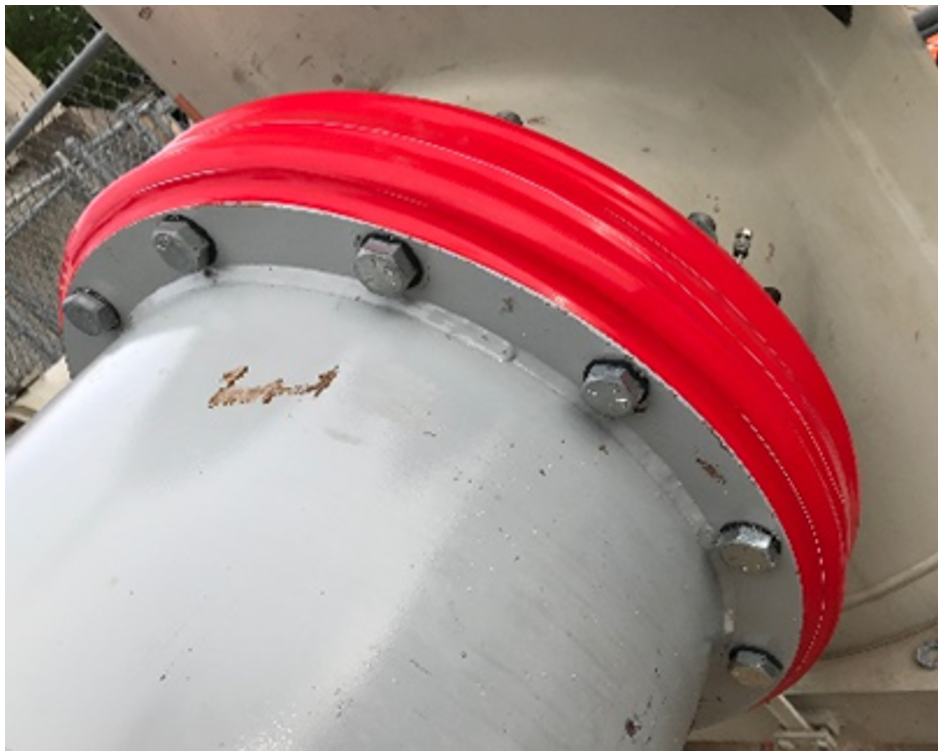
Leak Sealing for Circuit Breakers and Gas-Insulated Substations investigates methods that utilities can use to cost-effectively seal dielectric gas (SF6 and non-SF6) leaks. The emphasis is on identifying materials and techniques that can seal while maintaining equipment operating pressures and are easy for utility personnel to apply and remove. Novel techniques for sealing SF6 leaks on circuit breaker and GIS component geometries at ground potential were developed, and three successful techniques identified in the laboratory are in field tests at 10 utility sites. Tasks in 2026 plan to:
- Continue monitoring the performance of the existing and new field trials
- Develop application guides and “how-to” videos for techniques utilizing the learnings from field trials and make them available through the Transmission Resource Center (TRC): Circuit Breaker Life Management | Circuit Breaker Life Management (epri.com)
- Continue investigations to find sealants that cure at lower temperatures
- Scout innovative methods used by others and investigate whether they can be used for sealing breaker and GIS leaks
- Develop techniques for additional geometries, for example, the bushing flange interface; some of these new geometries may not be at ground potential
- Investigate scaling application of existing techniques to larger flange diameters
- Initiate a new effort to investigate:
- Challenges that may be encountered in sealing leaks of SF6 alternatives
- Applying techniques successful in sealing SF6 to SF6 alternative gases
- Circuit Breaker Reference Guide. There are plans to continue developing a comprehensive reference on circuit breaker procurement, operation, maintenance, and life-cycle management to serve as a resource for less experienced personnel. The goal is to develop a guide that provides information on fundamental design descriptions, operation, selection, and application principles, maintenance, monitoring, and replacement and captures the knowledge of leading circuit breaker experts. To date, nine sections have been written, including sections on circuit breaker installation, diagnostics, problem and failure investigation, lubrication, pump and compressor maintenance, specifications and procurement, and interrupter cleaning. New works aims to:
- Develop guidance material for performing factory visits and design reviews for SF6 circuit breakers
- Develop content on emerging circuit breaker technologies such as non-SF6 circuit breaker technologies
- Make the reference guide available through the Transmission Resource Center (TRC): Circuit Breaker Life Management | Circuit Breaker Life Management (epri.com)
Technical Webinars on the Circuit Breaker Guidebook intends to develop and host a series of technical webinars based on sections in the Circuit Breaker Guidebook. Content may be selected to accelerate learning on key topics in the Circuit Breaker Guidebook for those with less circuit breaker experience. Webinar material will be published for continued and convenient future access.
Circuit Breaker Mechanism Maintenance Guides. Maintenance supplements written for specific breaker models serve as training tools and guidance for proper mechanism field disassembly, cleaning, lubrication, and reassembly. Gaining importance as experienced personnel retire, the guides communicate information in step-by-step illustrated tasks, cover material not included in manufacturers’ instruction manuals, can be readily incorporated in a utility’s maintenance procedure, and have been developed for 11 models. The intent is to expand the library with new guides annually. Model selections plan to be prioritized based on advice from the task force. EPRI plans to provide the guides through the Transmission Resource Center (TRC): Circuit Breaker Life Management | Circuit Breaker Life Management (epri.com)
High-Voltage Circuit Breaker (HVCB) Life Management Workshop proposes an annual workshop that plans to include tutorials on the material contained in the project’s products, presentations on utility experiences, and examples of the application of the project’s results.
Anticipated Deliverables
| Deliverable |
Date |
| Tech Brief and Video: Intelligent Assistant for Maintenance and Troubleshooting |
12/31/2026 |
| Technical Update: Updated Version of Circuit Breaker Lubrication Selection and Application Guidelines |
12/31/2026 |
| Technical Update: Circuit Breaker Online Monitoring Assessment |
12/31/2026 |
| Technical Update: SF6 Analysis Efficacy Assessment |
12/31/2026 |
| Technical Update: Leak Sealing for SF6 Circuit Breakers and Gas-Insulated Substations |
12/31/2026 |
| Videos: Applying Leak Sealing for SF6 Circuit Breakers and Gas-Insulated Substations |
12/31/2026 |
| Technical Update: Circuit Breaker Reference Guide |
12/31/2026 |
| Tech Transfer: Technical Webinars on the Circuit Breaker Guidebook |
12/31/2026 |
| Technical Update: Circuit Breaker Mechanism Maintenance Guides |
12/31/2026 |
| Tech Transfer:HVCB Life Management Workshop |
12/31/2026 |
3 - P37.103: Protection and Control
Objective
Utilities face the challenge of managing the performance and reliability of multi-generation protection and control (P&C) assets, compounded by tighter regulations and resource limitations. New technologies and automated tools offer utilities opportunities to address these challenges and advance new P&C designs. By developing application guides, evaluating new technologies, and conducting technology transfer, the project aims to assist members in:
- Mitigating wildfire risks through the application of effective broken conductor detection technologies
- Preventing protection misoperation by establishing systematic configuration management processes that seamlessly integrate protection data, streamline setting change management processes, and automate relay settings verification
- Reducing costs and enhancing protection reliability by advancing condition-based protection system maintenance programs
- Advancing new P&C designs by embracing fiber-optic communications and digital substation technologies
- Equipping knowledge and skillsets for field deployment of IEC 61850 standards and technologies
Research Value
The results from this research may help electric utility companies by:
- Reducing the risk of wildfires caused by damaged transmission lines
- Enhancing relay setting management through the application of configuration management guidance and automation technologies
- Increasing protection system reliability by minimizing human errors, preventing relay misoperations, and detecting hidden failures
- Reducing costs and advancing new designs by adopting digital substation technologies
The research benefits the public by:
- Improving public safety and wildfire mitigation
- Increasing the reliability of electric power services
- Enhancing storm hardening and grid resilience
Approach
The focus of this research is on the protection and control assets and technologies used for transmission and substations. EPRI accomplishes this through robust laboratory testing, evaluation of emerging technologies, and development of guidelines and best practices.
The protection and control research aims to undertake the following tasks:
Evaluation of Broken Conductor Detection Technologies on High-Voltage Transmission Lines. Transmission line conductors may break and fall due to material aging, hardware failure, severe weather, and other factors. If not detected promptly, an energized broken conductor can lead to ground faults, high-temperature arcing, and potential wildfires, posing significant public safety risks. This research explores practical technologies and methods for detecting broken conductors on high-voltage transmission lines. Modern protective relays can detect broken conductors using methods such as transmission line charging current measurement, imbalance current criteria, and purpose-built logic. A testbed system at the EPRI P&C lab evaluates the effectiveness of these technologies, providing insights and practical guidance for mitigating wildfire risks.
Evaluation of Protective Relay Performance Under Power Swings: Lab Testing and Research Findings. Power swings can cause unwanted operations of protective relays, compromising power system reliability. The NERC PRC-026 standard mandates actions to prevent transmission protection misoperation during stable power swings in non-fault conditions. This research evaluates the performance of transmission protective relays during stable and unstable power swings through simulations and extensive lab testing. The findings provide insights into power swing dynamics, detection and blocking technologies, and the impacts on transmission protection relays, assisting utilities in improving protection system reliability.
Life-Cycle Management of Relay Settings: Configuration Management Guidelines and Effective Practices. Managing the consistency, conformance, and accuracy of large volumes of relay settings is challenging for utilities. This research addresses these challenges through configuration management (CM) guidelines and effective practices. A well-established CM system ensures systematic identification, approval, verification, and recording of relay settings throughout their life cycle.
Application Guide for Relay Firmware Change Management. Relay firmware changes can impact many components within a protection and control system. This research develops an application guide for utilities to manage relay firmware changes effectively, ensuring that changes are reviewed, documented, approved, and verified according to CM principles.
Life-Cycle Management of Relay Settings: Tools Assessment. Traditional tools for creating and managing relay settings have resulted in disconnected data repositories, applications, and environments. Stakeholders across a utility organization increasingly need to inquire about and exchange accurate setting information to support engineering, planning, field service, and compliance tasks. This research assesses commercially available software tools to provide a single source of truth for managing relay settings and to automate data exchange, verification, and documentation.
Application Guidelines for Protection System Maintenance. The reliability of protection and control systems depends on well-established asset maintenance programs. Utilities today face challenges such as difficulty in scheduling outages, stretched resources, and the growing complexity of relay technologies. This research evaluates new monitoring technologies and advances condition-based maintenance (CBM) programs. The research results may provide utilities with application guidance that can be used in engineering and design specifications to create effective CBM programs and reduce the costs associated with time-based maintenance (TBM) programs. The benefits of combining CBM and TBM in maintenance programs include reducing the cost and outage duration of TBM, expanding maintenance intervals based on NERC PRC-005, detecting hidden failures promptly, and triggering maintenance actions only when truly needed.

Technology Transfer Workshop: IEC 61850 Standard and New P&C Designs: The International Electrotechnical Commission (IEC) 61850 standard facilitates substation automation and enables equipment interoperability through a common data format. There is growing interest from utilities to explore the IEC 61850 standard and associated digital substation technologies for advancing new P&C designs that promise to improve safety and reliability, reduce costs, enable interoperability and condition monitoring, and strengthen grid resiliency.
The technology transfer workshop plans to provide members with knowledge preparation and new insights on:
- IEC 61850 standard and digital substation architectures
- New technologies for resilient communication networks
- New P&C applications using the Generic Object-Oriented Substation Event (GOOSE) message
- Emerging process bus technologies and new P&C applications using sampled value
- New technologies and industry standards for precision time synchronization
The workshop, held in collaboration with relevant EPRI research programs and industry stakeholders, aims to keep members abreast of the latest technologies and industry standards, provide a forum for members to share success stories and lessons learned, and prepare members for field deployment through EPRI technology transfer.
Anticipated Deliverables
| Deliverable |
Date |
| Evaluation of Broken Conductor Detection Technologies for High-Voltage Transmission Lines: Lab Testing and Research Findings (tech report) |
12/31/2026 |
| Evaluation of Protective Relay Performance Under Power Swings: Lab Testing and Research Findings (tech report) |
12/31/2026 |
| Life-Cycle Management of Relay Settings: Configuration Management Guidelines and Effective Practices (tech report) |
12/31/2026 |
| Application Guide for Relay Firmware Change Management (techreport) |
12/31/2026 |
| Life-Cycle Management of Relay Settings: Tools Assessment(tech report) |
12/31/2026 |
| Application Guidelines for Protection System Maintenance(tech report) |
12/31/2026 |
| Technology Transfer Workshop: IEC 61850 Standard and New P&C Designs (workshop) |
12/31/2026 |
4 - P37.104: Substation Corrosion Management
Objective
All assets within a substation are subject to degradation and have maintenance programs designed to extend their lifespan or schedule replacements. This project offers guidance on understanding the degradation rates of assets exposed in soil and atmospheric conditions, selecting the appropriate corrective actions, and ensuring these actions are environmentally aligned.
The objective of this project is to understand how substation assets degrade in soil and atmospheric conditions and where this represents risk to the utility. This is achieved through:
- Evaluating existing, new, and emerging inspection technologies to understand the limitations and benefits enabling utilities to select these tools based on the construction specifications
- Understanding corrosivity levels of all the soil series within a substation, allowing engineers to choose appropriate materials for the ground grid designs, foundations, and tank bottoms, and informing maintenance personnel on when to inspect the ground grid and other substation assets
- Defining corrosion control options and providing guidance for the appropriate mitigation methods for substation assets exposed to soil and atmospheric exposure
Research Value
This research can provide the following value:
- Provide guidance to asset management teams for making informed life-cycle decisions
- Develop processes and training for inspection and maintenance operations
- Optimize maintenance budgets through population assessment (targeted inspections) and predictive maintenance of ground grids
- Aid in development of guidelines for material selection and application to reduce theft of grounding system conductors and enhance corrosion control
- Help to understand and manage risks through prioritized inspections
- Enhance worker and public safety by proactively identifying areas of ground grid degradation
- Assess the potential of a cathodic protection system to detect ground grid theft
Approach
Each research task in 2026 aims to provide benefit to the funding utility, with varying levels of complexity. Some tasks may take longer to develop, and results might be used in future work. The research approach for understanding corrosion on substation assets is divided into short-, medium- and long-term research for clarity.
Short-Term Research:
Design, Installation, Maintenance, and Troubleshooting of Cathodic Protection Systems. These systems protect many assets within a substation, including the ground grid, fencing, equipment foundations, cable trays, bus work and other soil-exposed assets. The focus of these systems is to mitigate corrosion due to soil exposure but also the effects of stray current and circulating current corrosion. This last form of corrosion may be very extreme and cause severe damage due to charge transfer from the assets to remote earth.
In 2026, the focus will be on normalizing the circulating currents within the ground grid and creating guidelines for publication in 2027.
Inspection and Maintenance of Pad-Mounted Transformers. Pad-mounted transformers can corrode quickly and pose risks if they leak or have holes. This task will identify best practices for inspections and outline maintenance issues. In 2026, a report with guidelines for inspecting and maintaining pad-mounted transformers will be completed and reviewed.
Field Guides. A field guide is a pocket reference book that allows personnel to identify and address based on severity level. The second field guide for ground grid inspection and assessment by grounding technicians will be published in 2026. This is the Tier II level of inspections to be completed by substation operators with an advanced skill set.
Atmospheric Corrosion Modeling in Substations. Substation environments vary, making it hard to predict maintenance needs due to atmospheric corrosion. Knowing corrosion rates for steel, zinc, and aluminum helps asset managers plan for maintenance and replacements. The 2026 report will provide guidance on modeling conductor degradation.
Corrosion and Corrosion Control Workshop. This workshop offers both theory and practical experience in understanding corrosion and how to assess and implement various types of corrosion control technologies. The 2026 workshop is designed to support asset managers, engineers, maintenance managers, and field crews in gaining practical knowledge for extending the service life of their assets.
Medium-Term Research:
Mapping Equipotential Gradients within a Substation. Monitoring and trending ground grid degradation is labor-intensive and has safety concerns. Robotic systems are expected to take over these tasks, allowing personnel to focus on more critical work. The project will evaluate changes in equipotential lines using robots to map ground potential rises and locate degraded elements.
Corrosion Management Guidebook. This guidebook provides information for inspection, assessment, mitigation, and remediation for all departments within a utility. It includes fundamentals of corrosion, inspection and assessment guidance, and mitigation methods that align with the environment.
Long-Term Research:
Sensor Development to Discriminate Between Localized, General, and Stray Current Corrosion. Corrosion depends on factors like moisture, temperature, pH, and stray currents. EPRI has developed a sensor array to identify and measure different types of corrosion. The array’s capabilities were expanded in 2020 to measure weather patterns and correlate them with subgrade corrosion. Ongoing research focuses on analyzing large datasets to understand daily changes in corrosion activity.
Substation Ground Inspection Workshop. This project is to provide guideance to early-career grounding engineers and substation operators on best practices for inspection and assessment of substation ground grids. It includs corrosion fundamentals, details of each skill level, and the process flow in each tier.
Anticipated Deliverables
| Deliverable |
Deliverable Type |
Date |
| Mapping Atmospheric Corrosionin Substations and Modeling Asset Service Life |
Technical Update |
12/31/2026 |
| Inspection and Maintenance Operations for Pad Mounted Transformers |
Technical Update |
12/31/2026 |
| Field Guide: Inspection, Assessment, and Maintenance of Substation Ground Grids Tier II |
Technical Update |
12/31/2026 |
| CorrosionManagement Reference Book |
TechnicalReport |
12/31/2026 |
| Corrosionand Corrosion Control Workshop |
Workshop |
12/31/2026 |
Past EPRI Work on Topic
| Product ID |
Title |
Description |
Published Date |
| 3002015683 |
Ground Grid Protection Methods: An Overview of Mitigation Options |
Identifies corrosion control measures and evaluates which are most appropriate for each initiation mechanism. |
December 2019 |
| 3002019215 |
Inspection and Assessment for Substation Ground Grids |
Selection and application of tools for ground grid corrosion inspections. |
December 2020 |
| 3002021374 |
Ground Grid Protection Methods: Cathodic Protection Changes with Increased Impedance |
Refines the efficacy of a cathodic protection system as segments of aground grid are removed from operation. |
December 2021 |
| 3002024603 |
Evaluation of Ground Grid Inspection Technologies |
This deliverable continues the evaluation of new and emerging inspection technologies but also begins development of a training module for early career engineers, technicians and field crews. |
December 2022 |
| 3002027081 |
Workshop for Corrosion Fundamentals and Corrosion Control |
This course is designed to support all departments within transmission and distribution and allow an understanding of how to extend the service life of their assets. |
December 2023 |
| 3002030039 |
Field Guide: Substation Ground Grid Inspection and Assessment – Tier Level I |
Substation Ground Grid Inspection and Assessment Field Guide. |
December 2024 |
5 - P37.105: Balance of Substations: Batteries, Arresters and Ratings
Objective
The primary objective of this project is to determine how to maximize the service life of select assets while also considering technologies, systems, or methodologies that may impact the entire substation. This research focuses on equipment and technologies that enhance the reliability, safety, and longevity of substations, especially those that may not have another EPRI project set in which to reside. Examples include battery monitoring systems, surge arresters and surge arrester failure monitors, station ampacity ratings methodologies, and robotics for substation inspection applications.
The insights gained from this research will help utilities implement best practices and adopt innovative technologies that enhance the overall performance and reliability of their substations. The collaborative nature of EPRI’s research ensures that the findings are shared across the industry.
Research Value
- Provide guidance regarding asset lifecycles, including monitoring of surge arresters and battery systems
- De-risk novel robotics technologies associated with asset inspection, monitoring, and assessment
- Support utilities in making informed decisions about substation ratings, including improved thermal models to optimize power output and guidance for applying this information in overall transmission system ratings
Approach
Continue development of surge arrester sensor to monitor pending arrester failure: This multi-year task evaluates long-term durability of EPRI’s surge arrester failure sensor. The approach involves monitoring of new, aged, and failing arresters in the controlled, 138-kV research substation environment to expand the sensor’s data set for future analysis. This allows for examining of the impacts of a substation environment on the sensor performance while enabling easy access to the sensors if issues may arise.
Assess performance of battery monitoring systems: This task involves assessing battery monitoring systems from various manufacturers. Bench testing and battery emulators will be used to create repeatable test plans allowing for comparisons between systems that may require different battery chemistries or configurations.
De-risk robotic applications for substation inspections: This research explores the feasibility of autonomous mobile robots for substation inspections. It investigates their potential to complement human inspectors, be shared across substations, operate with minimal supervision, and be portable. The goal is to determine if these robots can currently complement or supplement human inspectors for improved efficiency, safety, and reliability in substation inspections. This task expands upon the work of previous years by continuing to deploy robotics for different applications or in various substation environments and summarizing lessons learned in a deployment guide for members.
Update EPRI’s Increased Power Flow Guidebook and Calculator for 2026: This effort advises utilities in how to calculate and apply ampacity ratings to substation equipment in accordance with NERC requirements and FERC order 881. This order shifts the industry from ambient adjusted ratings that vary with air temperature to dynamic line ratings (DLR) that vary with wind speed. In addition to applying DLRs to bus ratings, the new designations may result in the most limiting series element designation applying to station equipment, instead of the transmission line, for many circuits. This project supports the creation and enhancement of a web-based calculator to aid utilities in implementing the equations and methodologies of the Increased Power Flow Guidebook for their assets.
Anticipated Deliverables
| Deliverable |
Date |
| Insights and Considerationsfrom Substation Battery Monitoring System Evaluation and Testing (Technical Update) |
12/31/2026 |
| Best Practices on SubstationRobotics Deployment (Guide) |
12/31/2026 |
| EPRI Increased Power FlowGuidebook – 2026: Increasing Power Flow in Lines, Cables, and Substations(Technical Update) |
12/31/2026 |
| The Platinum Book Calculator(Software) |
12/31/2026 |
Past EPRI Work on Topic
| Product ID |
Title |
Description |
Published Date |
| 3002030041 |
Battery Monitoring SystemsProcurement Guide for Substation Applications |
This is a quick referenceguide describing considerations when selecting and procuring a batterymonitoring system for an existing battery bank installation to preventunexpected project delays. |
June 2024 |
| 3002027110 |
Insights and Considerations from Substation Battery Monitoring SystemEvaluation and Testing |
This report describes multi-year efforts by EPRI to evaluate variousbattery monitoring systems through 2023. |
December 2023 |
| 3002030040 |
Robotics Assisting ElectricalSubstation Inspectors |
This report documents theresults of a quadruped robotics deployment performed in EPRI’s 138-kVresearch substation. Various tests evaluated the capabilities and limitationsof the robot in a substation environment for navigation, data collection, andreporting, under varied environmental conditions. |
November 2024 |
| 3002030267 |
EPRI Increased Power FlowGuidebook – 2024: Increasing Power Flow in Lines, Cables, and Substations
|
This guidebook is a best practice reference on increasing power flowcapabilities of overhead transmission lines, underground cables, powertransformers, and substation equipment. |
December 2024 |
| 3002031149 |
EPRI Facilitating Adoption ofFERC Order 881 for Substation Equipment – 2024 Update |
This document explores theintricacies of Advanced Line Ratings and their application at transmissionutilities including Ambient Air Adjusted ratings of substation assets such asswitches, breakers, and bus materials. |
December 2024 |
6 - P37.108: Gas Insulated Substations and Lines
Objective
Gas-insulated substations (GIS) and gas-insulated lines (GIL) offer many benefits, including compact size, modularity, enhanced physical security (for indoor applications), and protection from pollution and harsh environments. These advantages make GIS and GIL attractive options for modern electrical infrastructure. However, they also present unique challenges, particularly in reducing sulfur hexafluoride (SF6) emissions and effectively detecting and locating defects. EPRI research is addressing these challenges through comprehensive laboratory tests and field evaluations. The value provided will be practical and well-informed guidance on the application, use, and management of GIS and GIL. The research focuses on two key areas: SF6 alternatives, and condition monitoring of GIS/GIL systems.
Given the large volumes of SF6 used in GIS and GIL, it is important to explore the upcoming technologies and dielectrics that offer reductions in that usage. EPRI’s GIS laboratory is dedicated to addressing key open issues, such as identifying and testing alternative gases and materials that can perform similarly to SF6 but with a lower environmental impact. The research will also report on the latest field applications and trends in the industry.
In the context of GIS condition monitoring, there are various existing and emerging techniques, including ultra-high frequency (UHF), acoustic emission, and SF6 gas analysis. Each has unique merits in defect detection. To better evaluate each approach, EPRI has built and commissioned a full-scale GIS laboratory. The facility allows EPRI to introduce a range of defects into GIS components and assess the performance of each technique under controlled conditions. The effectiveness of each technology will be quantified. The results will guide the industry in specification, interpretation, and adoption of technologies. By addressing the challenges associated with SF6 emissions and defect detection, EPRI is contributing to the development of more sustainable and reliable electrical infrastructure.
Research Value
The research aims to provide value in three key areas:
- Guidance on SF6 alternatives
- Lowered maintenance cost of GIS and GIL through improved diagnostics
- Improved reliability of electric service through better reliability and availability
Approach
In 2026, the approach will involve both conducting laboratory testing on GIS and researching field applications and industry trends. The results obtained each year will contribute to the EPRI GIS/GIL Guidebook. The following tasks will be conducted to support the objectives:
The GIS and GIL of the future
The first goal of this 2026 task is to provide valuable and practical insights into the continually growing topic of using C4-fluoronitrile mixtures or clean air as insulation gases instead of SF6. This portion of the research will focus on exploring the key issues related to gas handling, analysis, safety, and reclaiming/recycling.
The second aim of this research stream encompasses all three alternative SF6 technologies. With the implementation of new insulating technologies, independent of the composition, the ability to detect degradation of internal components non-invasively is of high importance to users. The plan is to evaluate new detection technologies, detection techniques previously used for SF6-based systems, and/or mechanical wear detection techniques used for other gas systems to determine physical system.
EPRI Guidebook on GIS and GIL – 2026 update
The Guidebook is expanded each year to include research results and industry advances. Under this task in 2026, EPRI will learn from the field implementations on new GIS and GIL concepts. The collaborative nature of EPRI allows for sharing of utility experiences with new technologies. The sharing of these experiences will help the industry reduce risks when selecting and applying these new technologies. Examples will include field deployments of non-SF6 GIS/GIL, long GIL runs, online monitoring technologies, and novel current transformer (CT) and potential transformer (PT) concepts.
Anticipated Deliverables
| Deliverable |
Description |
Date |
| TheGIS and GIL of the future |
Valuable insights from the EPRI laboratories using new SF6-free gas alternatives. |
12/31/2026 |
| EPRI Guidebook on GIS and GIL – 2026 update |
Practical and well-informed guidance on GIS and GIL- with the 2026 chapter on new GIS/GIL technologies deployed in the industry. |
12/31/2026 |
Past EPRI Work on Topic
| Product ID |
Title |
Description |
Published Date |
| 3002030042 |
EPRI Guidebook on GIS and GIL - 2024 Edition |
EPRI research results and industry trends and lessons learned. |
December 2024 |
| 3002030043 |
Applying new GIS/GIL Technologies |
Practical and well-informed guidance on new GIS and GIL technologies– including SF6 alternatives. |
December 2024 |
3002027117
|
GIS and GIL EPRI Guidebook – 2023 Edition |
This guidebook is updated each year to include the latest research. In 2022, chapters were added on SF6 leak detection. |
December 2023 |
3002027120
|
SF6 Alternatives - Industry status update for 2023
|
A status update of the current state of the industry when itcomes to progression and availability of SF6 alternatives. |
December 2023 |
7 - P37.113: Polymer Bushing Life Management
Objective
Electrical utilities depend on power transformers to be reliable and in good health. Since a transformer consists of multiple components, its ability to operate is determined by its weakest part. Bushings are integral to the operation of high-voltage transformers and are subjected to various stresses from the transformers and the environment. Industry surveys have indicated that over 20% of transformer failures can be attributed to issues with traditional electrical bushings. As a result, the electrical industry seeks alternatives or improvements to traditional oil-filled bushings.
Polymer bushings (also known as dry-type bushings) are a newer technology and offer several potential advantages compared to oil-impregnated paper bushings with porcelain exteriors. However, despite their benefits, there are still many unanswered questions regarding the longevity and reliability of dry-type bushings. This lack of information can lead to hesitation by utilities to adopt polymer bushings. With low adoption rates, the amount of field information available remains limited and grows slowly. This project aims to accelerate the amount of available information on polymer bushings and provide insights into polymer bushings for users and potential users through three primary functions:
- Provide a data-based, technical foundation for utilities to make decisions when specifying, operating, and maintaining polymer bushing technologies
- Offer best practices, as well as assessing and managing risks through early insights learned from laboratory testing and field experience
- Provide greater insight and understanding of the effectiveness of various diagnostic approaches used for oil-filled bushings when used with polymer bushings
One path to grow these areas is to have utilities and EPRI share their experiences with polymer bushings with one another, combined with new literature as it becomes available. Additionally, a greater understanding of polymer bushings can be made through the application of polymer bushings in simulated field conditions for long periods of testing (i.e., years) and by testing with climate extremes. Any new topics and/or concerns identified in such tests can then be studied with more targeted research.
In other words, the laboratory-based research is structured to probe specific uncertainties surrounding polymer bushings by performing a mix of long- and medium-term experiments. Meanwhile, short-term gains can be made through data collection from literature and users to extract insights. Questions the project seeks to probe include, but are not limited to:
- How do polymer bushings perform under extreme environmental conditions and operating stresses (electrical, thermal, and mechanical)?
- How would the polymer bushings be affected by overloading, and would different specifications and/or operating practices be required?
- Are present monitoring and diagnostic test methods sufficiently effective for assessing the condition of polymer bushings?
- Are there unique operating or maintenance concerns with polymer bushings?
- Can prevalent failure modes or emerging reliability issues be identified earlier to mitigate concerns with widespread adoption?
Research Value
The core values that this research aims to provide include:
- Enhancing confidence among users and potential users in adoption of polymer bushings
- Providing a robust technical basis for decisions when specifying, operating, and maintaining new polymer bushing technologies
- Reducing life-cycle risks and costs to improve reliability and affordability
- Assisting users in assessing and managing risks through early insights gleaned from laboratory testing and field experience
- Presenting findings that provide a better understanding of the efficacy of various monitor and diagnostic test technologies applied to polymer bushings
Approach
Guidelines on specification and maintenance of polymer bushings: Work will continue to refine and share the summation of learnings observed through the different research projects in P37.113. Additionally, findings through the shared operating experience of participating utilities into a series of guidelines on application, installation, operation, maintenance, and diagnostics of polymer bushings are proposed to be collected and summarized.
Performance of polymer bushings under extreme environmental conditions and operating stresses: Long-term exposure and testing of dry-type bushings is planned to be continued at full scale in an outdoor setting. The EPRI 138-kV research substation in Lenox, Massachusetts, affords the opportunity for an ideal location for outdoor testing under a wide range of ambient temperatures and precipitation types. Rain spray equipment is available to simulate a wet climate when desired. The bushings can be simultaneously energized to rated voltage while circulating currents up to, and in excess of, rated current. This test program began in 2019 and has been ongoing.
Targeted testing of specific concerns: While full-scale exposure and testing in the EPRI 138-kV research substation is highly valuable, it requires significant time. To expedite learning and provide actionable insights on specific concerns, like sensitivity to overloading or high mechanical stresses, EPRI intends to conduct targeted tests addressing issues identified by participating members. Topics of interest to explore include sensitivity to overload (load and temperature), and tests on bushing reliability under high cantilever forces, which could occur during through-fault conditions.
Analysis of the reliability and performance experience of polymer bushings: This task aims to provide the results of a broader study to classify the reliability, performance, and life expectancy of polymer bushings utilizing voluntary contributions of data and field experience from interested members.
Anticipated Deliverables
| Deliverable |
Date |
Performance of Polymer Bushings under Extreme Environmental
Conditions – Technical UpdateReport documenting 2026 test results of polymer bushings tested in the 138-kV Research Substation in Lenox, MA. |
12/31/2026 |
Guidelines onSpecification & Maintenance of Polymer
Bushings – Technical Update Reportdocumenting industry guidance and best practices on applications, operation, and diagnostics of polymer bushings (2026 Edition) |
12/31/2026 |
Past EPRI work on Topic
| Product ID |
Title |
Description |
Published Date |
| 3002030044 |
Guidelines on Specification and Maintenance of Polymer Bushings-2024 Update |
Updated version of Polymer Bushing Guidelines |
December 2024 |
| 3002030048 |
Performance of Dry Bushings Under Extreme Environmental Conditions-2024 Update |
Testing and monitoring results of polymer bushings tested in the 138-kV yard in Lenox in 2024 |
December 2024 |
8 - P37.114: Substation Physical Security
Objective
The energy sector’s assets, systems, and networks are crucial, as their incapacitation or destruction could severely impact national security, the economy, and public and employee health and safety. Other essential sectors, such as water, banking, and transportation, rely on safe and reliable electricity.
Transmission and substation assets face two types of threats: natural and man-made. Natural threats include tornadoes, hurricanes, earthquakes, wildfires, and geomagnetic disturbances. Man-made threats encompass vandalism, theft, drone attacks, sabotage, and cyber-attacks.
Emerging technologies may enhance situational awareness and asset protection. This research aims to improve resilience and reduce potential disruptions in substations by better understanding physical security events and evaluating mitigation and response options. EPRI collaborates with industry, government, academia, and other stakeholders to share knowledge and resources, avoiding duplication of efforts. EPRI’s R&D focuses on identifying, evaluating, and developing improved methods to detect, deter, and respond to these threats.
Research Value
The significance of safe and reliable electricity as a vital public resource cannot be overstated. EPRI’s work Physical Security offers numerous benefits, including:
- Enhancing the resilience and protection of critical infrastructure
- Leveraging R&D on cross-cutting topics such as ballistics, intrusion detection, insider threats, uncrewed aircraft systems (UAS), and counter-UAS
- Establishing a technical foundation to improve security and decision making
- Detecting and deterring threats to substations
- Increasing understanding of component vulnerabilities to physical attacks
- Evaluating the effectiveness of protective, defensive, and recovery technologies
- Assessing the impact of various mitigation and hardening solutions on daily operations
- Safeguarding public and employee health and safety
Approach
The intent of this project is to continue a multi-year, multi-layered approach to improve security. The project focus is on these key tasks:
Intrusion Detection Devices: Many substations are unmanned, necessitating the use of technology to detect intrusions. Numerous detection devices are available on the market. EPRI aims to offer third-party objective testing of these devices and assess their applicability in substations through repeatable evaluations at EPRI’s 138-kV research substation.
Robotics Technologies: Automated or teleoperated robotics have significant potential to enhance situational awareness during physical security events. This research aims to develop laboratory tests using security scenarios to evaluate the effectiveness of robotic systems in increasing situational awareness, reducing response times, and understanding risks. The goal is to gain a deeper understanding of how robotics can support unmanned substations.
UAS Detection Technologies: UAS pose security risks to substations, whether from malicious intent or accidental operations. This research investigates technologies capable of detecting unauthorized UAS activities around substations. Objectives include assessing detection effectiveness in substation environments and identifying potential unintended consequences. While there is already substantial research on counter-UAS technologies, the field is rapidly evolving, necessitating ongoing research to remain at the forefront.
Anticipated Deliverables
| Deliverable |
Date |
| Intrusion Detection Devices in Substations –Technical Update – As these systems are deployed understanding device capabilities |
December 2026 |
| UAS Detection Technologies – Continued assessments ofnew technologies and applicability into the substations space |
December 2026 |
Past EPRI Work on Topic
| Product ID |
Title |
Description |
Published Date |
| 3002028197 |
Compendium of 2014–2021 EPRI Ballistic andBlast Testing Technical Reports |
Compendium of all EPRI ballistics testing for T&Sassets |
December 2023 |
3002030054
|
UAS Detection Technologies: Next Phase of Assessments |
Case Study of an implementation of a counter-UAS system at a utility site |
December 2024 |
9 - P37.116: HVDC Converter Stations and Flexible Alternating Current Transmission System (FACTS) Devices
Objective
This project evaluates high-voltage direct current (HVDC) and flexible alternating current transmission systems (FACTS) technologies. HVDC and FACTS technologies offer options to enhance the capacity of existing lines. A dc transmission system also provides an effective alternative for integrating renewable resources, increasing the overall power system reliability, and transferring bulk power.
Recent advancements in HVDC and FACTS technologies, such as the development of voltage-source converter (VSC) technology, have been significant. As HVDC transmission systems and FACTS are planned, constructed, and refurbished, it is crucial that the power industry access the latest technologies and options to make informed decisions. Guidelines are essential to match applications with available approaches and to assist utilities in the selection between AC or DC systems. Research is needed to address the challenges and reduce costs associated with HVDC and FACTS controllers, thereby increasing their applications. Furthermore, the integration of HVDC and FACTS for renewable energy and smart transmission grids requires further study.
EPRI conducts investigations and develops reference materials that capture and consolidate industry experience and knowledge on HVDC and FACTS technologies. EPRI continues to build a comprehensive library of information to inform technology application and management.
The objectives of this project are to:
- Provide state-of-the-art information on HVDC and FACTS technologies
- Assist members in selecting proper options for renewables integration, increased capacity, and other applications
- Identify new applications and opportunities to reduce costs for HVDC and FACTS
- Develop operational, maintenance, and replacement strategies for HVDC and FACTS
- Identify and conduct research to address knowledge gaps
Research Value
The project can provide the following benefits:
- Research results to aid in the construction and operation of cost-effective HVDC and FACTS infrastructures
- Data to assist in selecting an optimal option (HVDC or HVAC with FACTS) for members’ utility systems
- A comprehensive and current resource for members to stay informed of HVDC and FACTS technologies
- Enhanced overall system controllability, stability, and reliability by using HVDC and FACTS
- Newly developed concepts, such as dc grids and dc circuit breakers to support a smart grid
Approach
This project seeks to enhance knowledge of HVDC and FACTS technologies in the following ways:

Novel Concepts for DC Circuit Breakers and DC-DC Transformers: In recent years, several innovative concepts have been developed to enhance ac-to-dc line conversions and dc grid operations. The tri-pole concept was introduced to maximize power transfer capability, while transformerless voltage source converters were studied and documented. In 2016, the operational challenges of dc grids, along with the requirements for dc circuit breakers and dc-dc transformers, were examined. In 2017, new VSC concepts, including full-bridge modular multilevel converters and cascaded converters, were explored. Compact dc converter stations were studied using simulations in 2018. In 2019, single-arm modular multilevel converter concepts were investigated, leading to prototype development in a lab environment in 2020. That same year, a novel VSC concept with dc fault current-blocking capability was studied, with further prototype development continuing into 2021. By 2022, the state-of-the-art dc circuit breakers, including hybrid-type breakers and dc-dc transformers, were documented. Looking ahead to 2025 and 2026, different VSC topologies, such as the Alternate Arm Converter for fault current limiting, are planned to be documented, along with new dc circuit breaker and dc-dc transformer concepts. Future years intend to see the identification, development, and potential demonstration of new VSC concepts at utility sites using supplemental funding. Each study is prioritized with guidance from members and the industry.
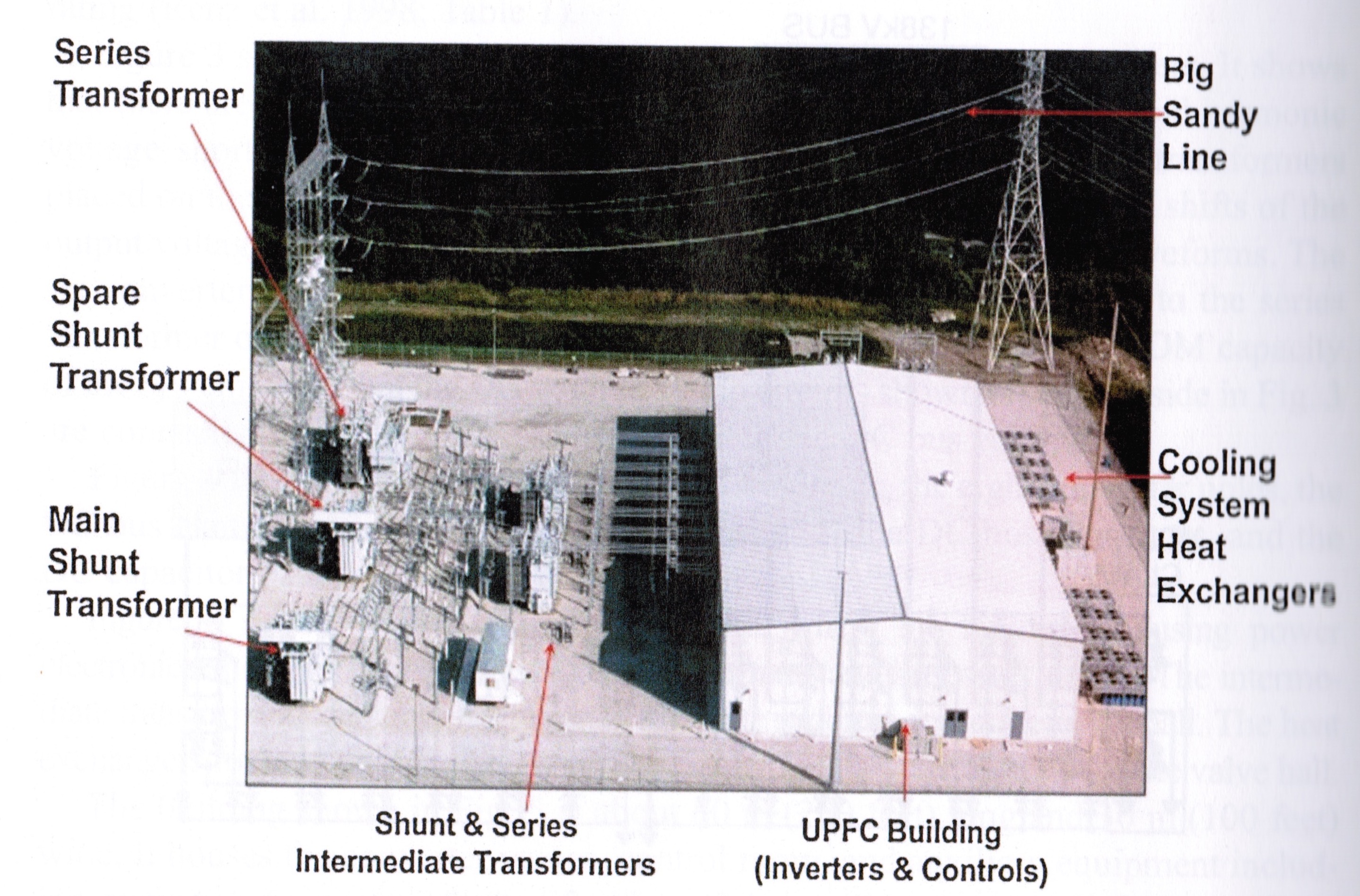
Best Practices for Operation, Maintenance, and Refurbishment for Life Extension of FACTS Controllers – Static Var Compensator (SVC) and Static Synchronous Compensator (STATCOM) Life Extension Guidelines: This task systematically identifies the needs for the operation, maintenance, and replacement of FACTS controllers. Initially, utilities with existing FACTS controllers may be surveyed to understand current maintenance and operation practices, with their needs documented and prioritized. Based on the survey results, best practices for operation, maintenance, and replacement strategies can be developed. Vendor-independent plug-and-play components are necessary to facilitate upgrades of FACTS controllers. The requirements for these components and potential plug-and-play options may also be identified. Life extension guidelines for FACTS controllers, such as SVC, STATCOM, static synchronous series compensators (SSSC), and unified power flow controllers (UPFC), intend to be developed in future years.

Performance and Cost Comparison of FACTS Controllers: In 2018, utility surveys were conducted to understand the operation and maintenance of some of the FACTS controllers, and the best practices were documented. In 2019, FACTS valve cooling system life assessment studies were conducted with utility surveys using practical applications. In 2019, novel control strategies were developed to operate a STATCOM as an active filter to absorb system harmonics. In 2020, a comparative study on the performance and costs of thyristor-controlled series capacitors (TCSCs) and SSSCs was started; it was completed in 2021. Comparison of the performance and costs of other FACTS controllers, such as SVC, STATCOM, and synchronous condensers, was started in 2021 and completed in 2022. In 2023, EPRI compared the performance and costs of UPFCs, interline power flow controllers (IPFCs), and other FACTS controllers. In 2024, the application of STATCOM with energy storage was studied and documented. FACTS Application Guide, which includes all FACTS controllers, was developed in 2024. Several case studies intend to be developed with different FACTS device applications for power grids, including renewable applications in 2026 and beyond.
HVDC & FACTS Technology Watch Newsletter: To foster new opportunities in the HVDC and FACTS areas and disseminate technical developments in a timely manner, HVDC & FACTS Technology Watch is published annually. The newsletter reports on current and new HVDC and FACTS installations around the world as well as the latest developments in HVDC and FACTS technologies.
HVDC & FACTS Conference and Workshop: An HVDC & FACTS conference or a workshop is organized in alternating years, and a workshop is expected to be held in 2026. The conference provides a forum for members to learn, gain, and share experience with other utilities and for the suppliers to present their latest technology to members. The workshops vary in scope from HVDC and FACTS basics to specialized topics, such as modular multilevel VSCs.
Updated HVDC Reference Book: Information is being developed for the HVDC Reference Book (also known as the Olive Book). The updates incorporate new developments and experiences and assist users in specifying HVDC system components, designing overhead lines, and assessing existing HVDC systems for life extension options. In 2020, EPRI updated the chapter on HVDC overhead lines. In 2021, EPRI updated the chapter on HVDC cables. In 2022, EPRI updated the chapter on voltage source converter-based dc transmission. In 2023, all the chapters were edited and updated with the latest information; hard copies of the HVDC Reference Book were published in March 2024. In 2024 and 2025, EPRI updated the chapter on converter cost estimates. In 2026, EPRI plans to update HVDC cables and VSC chapters with the latest technical information. Electrical effects chapter with the latest information obtained from testing plan to be updated in future years.
Anticipated Deliverables
| Deliverable |
Date |
| Novel DC Circuit Breaker and DC-DC Transformer Concepts for DC Grid Application (Technical Update) |
12/31/2026 |
| Performance and Cost Comparison of FACTS Controllers – TCSC, SSSC, SVC, STATCOM, UPFC,IPFC, and Synchronous Condenser – Case Studies (Technical Update) |
12/31/2026 |
| Best Practices for Operation, Maintenance, and Refurbishment for Life Extension of FACTS Controllers – SVC & STATCOM Life Extension Guidelines (Technical Update) |
12/31/2026 |
| HVDC& FACTS Technology Watch Newsletter (Technical Resource) - The newsletter provides updates on recent HVDC and FACTS projects and new technologies |
12/31/2026 |
| HVDC& FACTS Workshop (Workshop) |
12/31/2026 |
| Updated HVDC Reference Book – Olive Book (Technical Update) |
12/31/2026 |
Past EPRI Work on Topic
| Product ID |
Title |
Description |
Published Date |
| 3002030235 |
EPRI HVDC Transmission Reference Book: 2024 Edition |
EPRI HVDC Transmission Reference Book (Olive Book) is a state-of-the-art guidebook that provides transmission companies with a comprehensive, single source of technical information and guidance for designing, building, operating, and extending the life of HVDC transmission systems. |
December2024 |
| 3002030058 |
FACTS Application Guide - Performance and Cost Comparison of FACTS Controllers –TCSC, SSSC, SVC, STATCOM, UPFC, IPFC, and Synchronous Condenser |
Acomparative study of the technical performance and cost comparison of FACTS controllers—TCSC,SSSC, SVC, STATCOM, UPFC, IPFC, and Synchronous Condenser — for increased transmission capacity on the existing ac lines. |
November 2024 |
| 3002030059 |
Applicationof STATCOM with Energy Storage |
Applicationof STATCOM with energy storage was studied, and the importance of real powerfor stability improvements is documented. |
June 2024 |
| 3002024631 |
Novel Concepts for DC CircuitBreakers and DC-DC Transformers |
Thestate-of-the art topologies for DC circuit breakers including mechanical, solid state, and hybrid topologies were documented. Several proposed DC-DC transformer concepts were also documented. |
December 2022 |
| 3002024629 |
Technical Performance and Cost Comparison of SVC, STATCOM, and Synchronous Condenser |
A comparative study of the technical performance and cost comparison of the shunt FACTS controllers -SVC and STACOM as well as non-FACTS controller – Synchronous Condenser was documented for making decisions on increasing transmission capacity on the existing assets. |
April 2022 |
| 3002021402 |
Novel Voltage Source Converter Topology with Fault Current Blocking Capability |
A novel concept was developed replacing the diodes with thyristors in a half bridge module of a voltage source converter to block fault currents coming from AC system for DC line faults as a prototype in a lab environment and the operation was demonstrated successfully. |
June 2021 |
| 3002021404 |
Technical and Operational Comparison of series FACTS controllers – TCSC and SSSC |
A comparative study of the performance and cost of the TCSC and SSSC was documented for making decisions on increasing transmission capacity. |
July 2021 |
| 3002019243 |
Single Arm Modular Multilevel Voltage Source Converter Concepts – Prototype Development |
A voltage source converter was developed with a single arm only (instead of three arms) as a prototype in a lab environment and the operation was demonstrated successfully. |
May 2020 |
| 3002019241 |
HVDC & FACTS Workshop |
An HVDC & FACTS technology update workshop was provided by WebEx, which was well attended by more than 80 utility engineers. |
November 2020 |
10 - P37.117: Using Voltage and Current Measurements for Monitoring Asset Conditions
Objective
The project objective is to utilize existing data streams of voltage and current to assess the health of substation equipment. The focus of this project is on voltage and current signals already being measured for other functions (i.e., protection, control, metering) and readily available in many substations. Research interests include enhanced understanding of online voltage and current waveforms as indicators of asset health, evaluation of the effectiveness of commercial solutions (if available), and development of novel techniques. The overall, multi-year goal of this project is to create guidelines to inform member utilities on ways they may be able to monitor incipient asset failure in their substations using these data streams.
Research Value
- Increased reliability of power supply through early detection of asset failures
- Enhanced safety by reducing unexpected catastrophic equipment failure
- Improved risk assessment of substation assets using minimal quantities and types of data
- Lower operations and maintenance (O&M) costs for monitoring major substation equipment health
- Reduced replacement costs by avoiding collateral damage from catastrophic equipment failure
Approach
Capture coupling capacitive voltage transformers (CCVT)/voltage transformers (VT) signals during CCVT/VT degradation: This project aims to record voltage waveform signatures during instrument transformer failure to enable future creation of thresholds, algorithms, or methods that could detect similar failures in the future. Research may be performed on a combination of computer models and some quantity of physical assets, depending upon the level of member engagement. The project intends to stress CCVTs or VTs to accelerate their aging through thermal cycling, overvoltage stress, or other means. As the devices are pushed into failure modes, comparing online data readings to baseline may offer opportunities to identify voltage signatures indicative of failure. The forensic examination of failed devices may further identify
Evaluate capabilities of instrumentation used to capture secondary voltage signals: This project plans to enhance the industry’s understanding of how the selection of ancillary instruments used to capture CCVT/VT voltage signals may impact CCVT/VT health monitoring. Examples of instruments connected to voltage device secondaries may include power quality monitors, relays, phasor measurement units (PMUs), or other data recorders. The impact of built-in device filtering, sampling rate, and triggering capabilities are of particular interest as they relate to signal quality for CCVT/VT health monitoring. The goal of this task is to improve our understanding of the capabilities and limitations of repurposing specific pieces of ancillary equipment to monitor VT/CCVT signal health with data typically captured by these devices for other purposes.
Anticipated Deliverables
| Deliverable |
Date |
| Voltage Transformer Accelerated Aging Tests (Technical Update) |
12/31/2026 |
| Voltage Transformer Condition Monitoring Implementation Guide (Guide) |
12/31/2026 |
Past EPRI Work on Topic
| Product ID |
Title |
Description |
Published Date |
| 3002030062 |
Evaluation of CCVT Secondary Voltage Recordings During Power System Phenomena |
This is a report documenting the results of recording a healthy CCVT’s signals during the occurrence of imposed defects in nearby systems or equipment at EPRI’s 138-kV research substation. The planned 2025–2026 baseline testing and secondary signal recording associated with accelerated aging tests will build upon lessons learned from this effort. |
December 2024 |
| 3002027138 |
Using Voltages and Currents:Applicable Assets |
This report is a review of literature to determine which substation assets are likely candidates for health monitoring using voltage and current signals. The selection of CCVTs/VTs for P37.117’s 2025-2026 evaluation is based in part on the outcomesof this report. |
December 2023 |
| TR-100205 |
Workshop Proceedings: Failed High-Voltage Instrument Transformers |
These workshop proceedings describe utility field failures, identify failure modes, and identify possible mitigation measures associated with high voltage current and potential transformers. The field data from these proceedings may inform failure modes identified in upcoming P37.117 testing. |
January 1992 |
| TR-113649 |
Proceedings: High Voltage Current Transformers and Bushings: Failure Prediction and Prevention Symposium |
These conference proceedings include several reports and papers documenting high voltage Current Transformer (CT) accelerated aging tests sponsored by EPRI, including approach, monitoring techniques, and analysis of failed units. The lessons learned from accelerated aging tests in this space inform approaches to accelerated aging test for other instrument transformers in 2025+ forP37.117. |
December 1999 |
